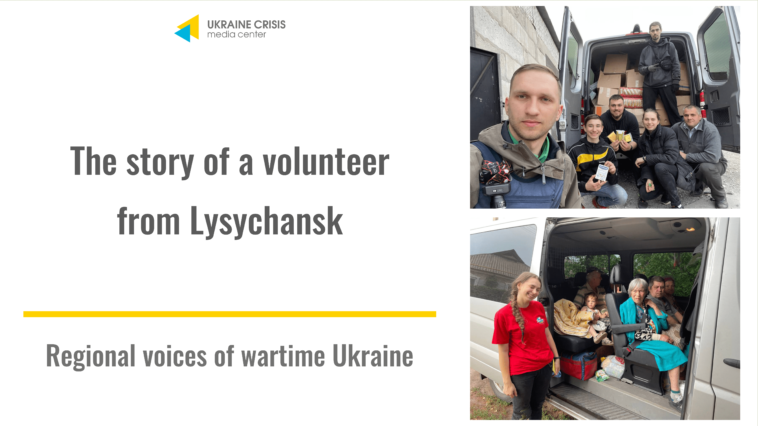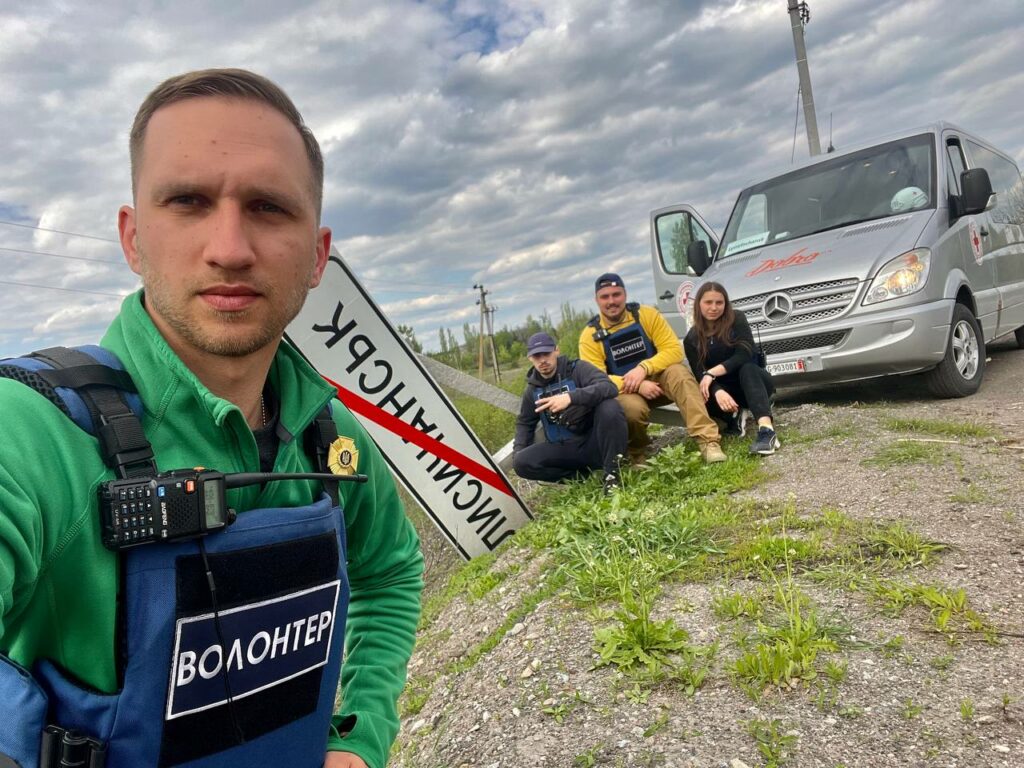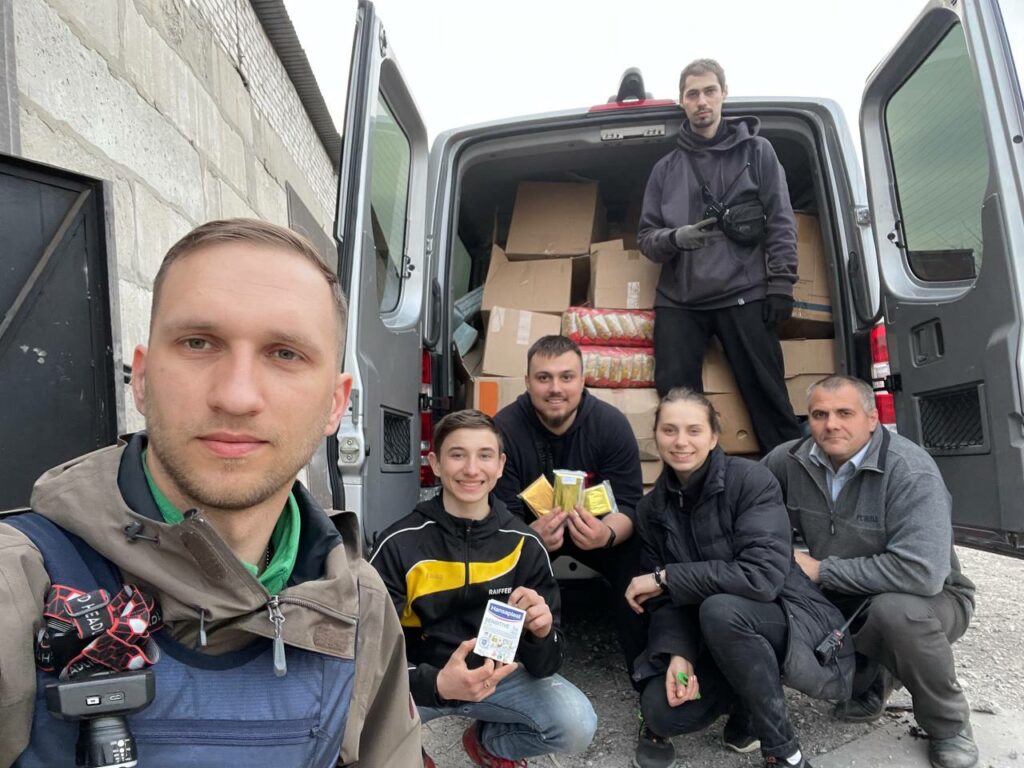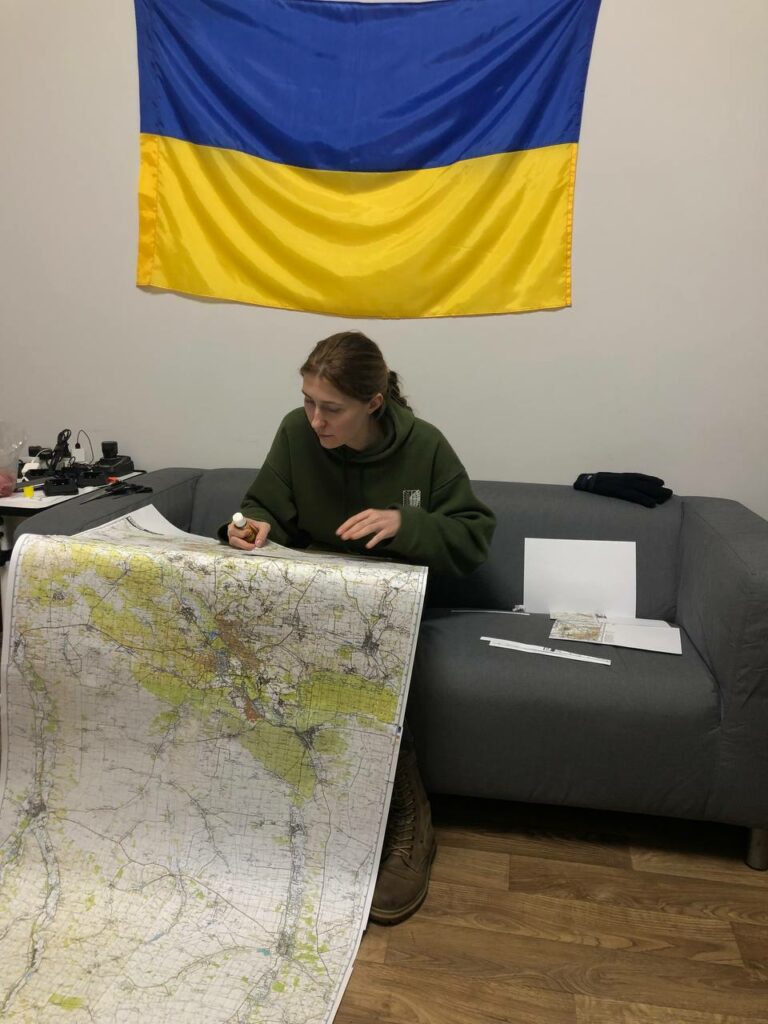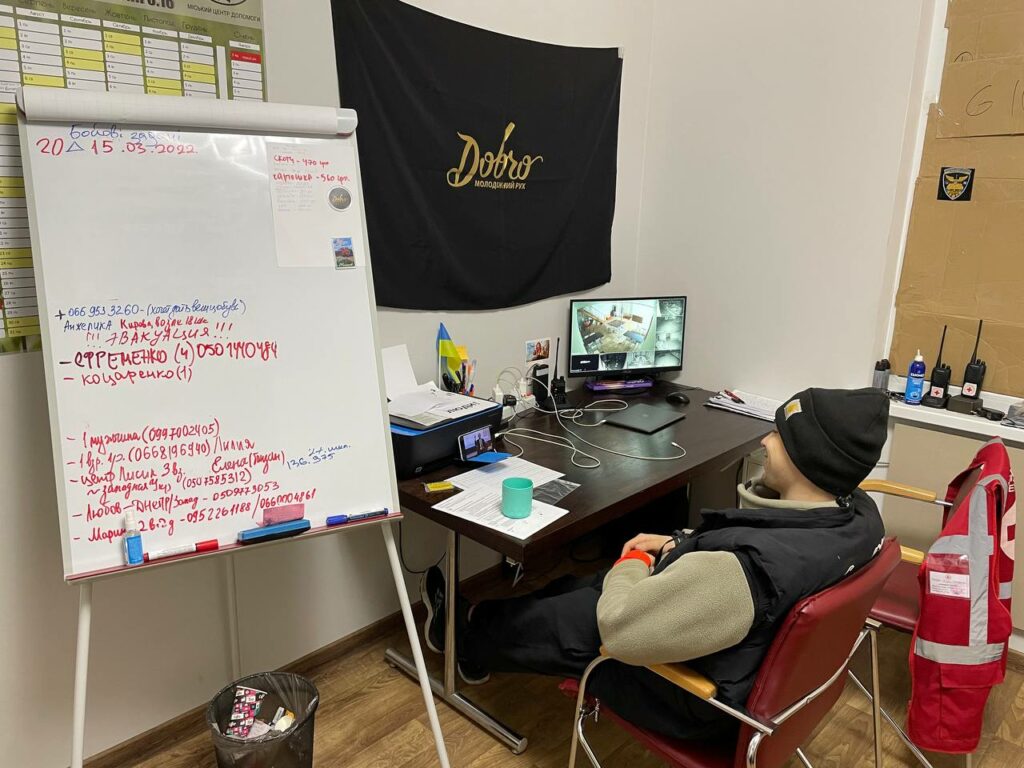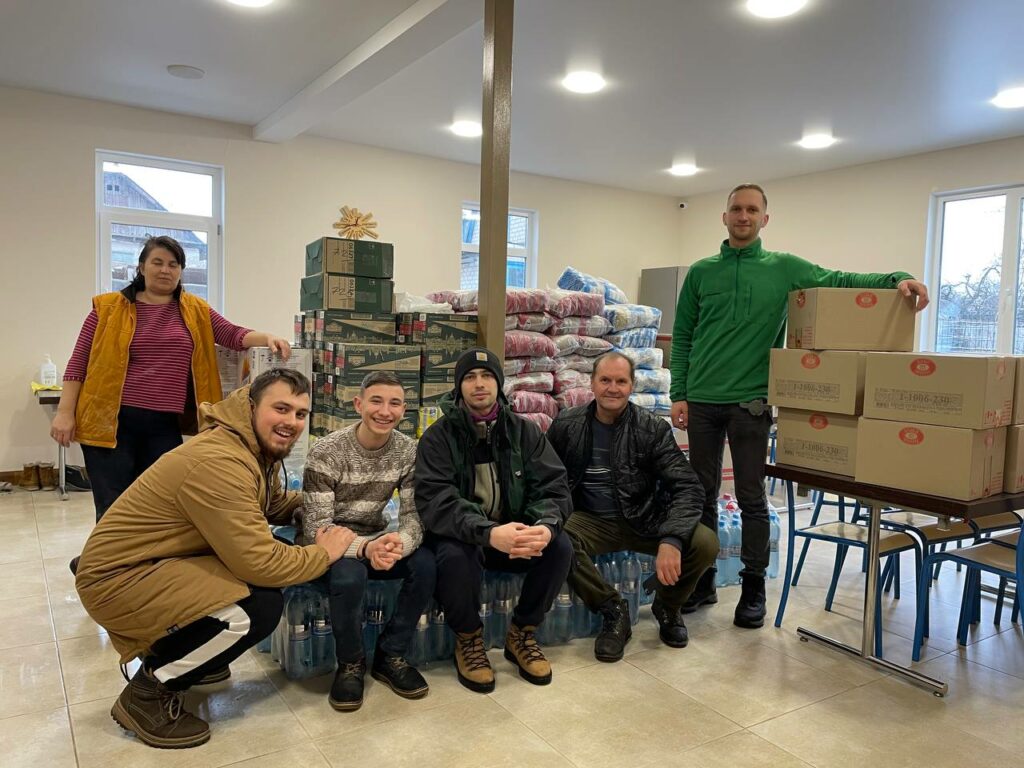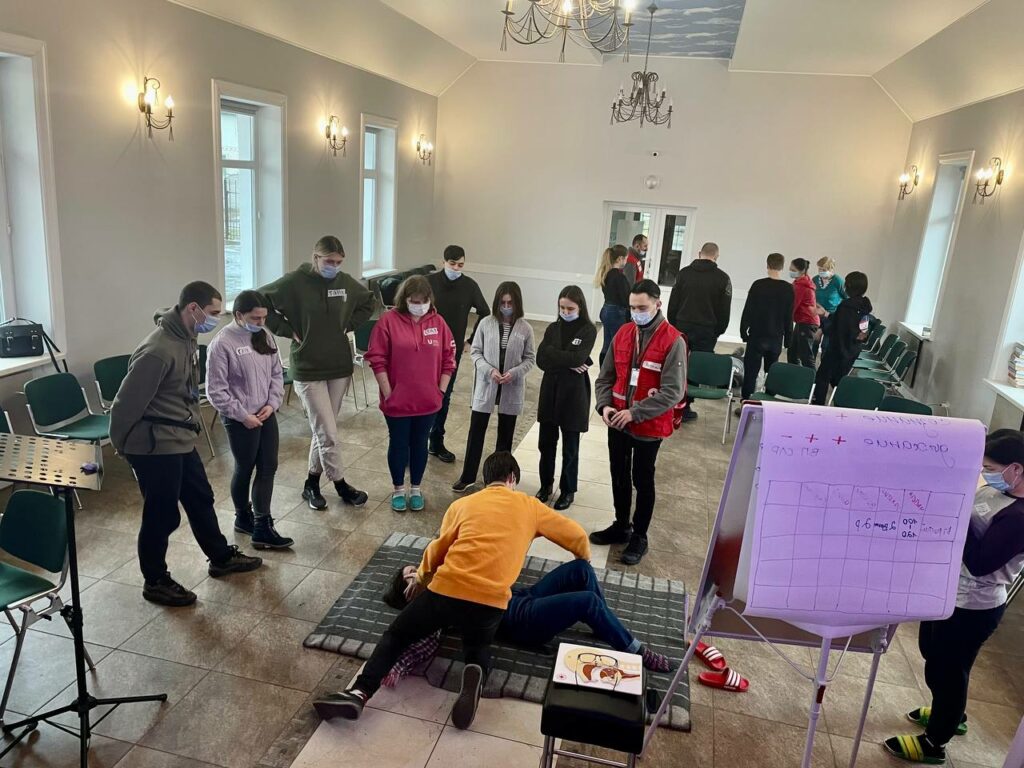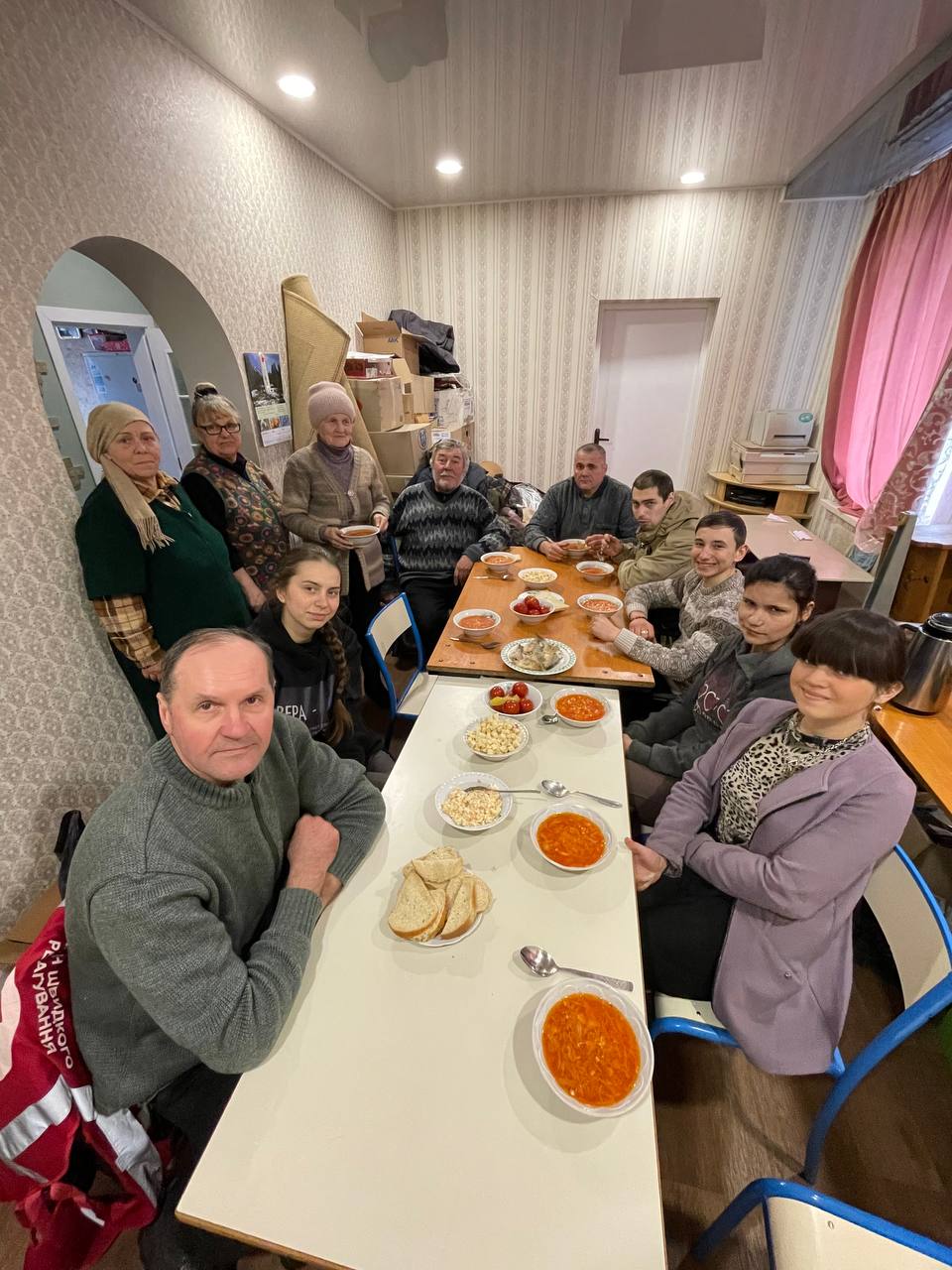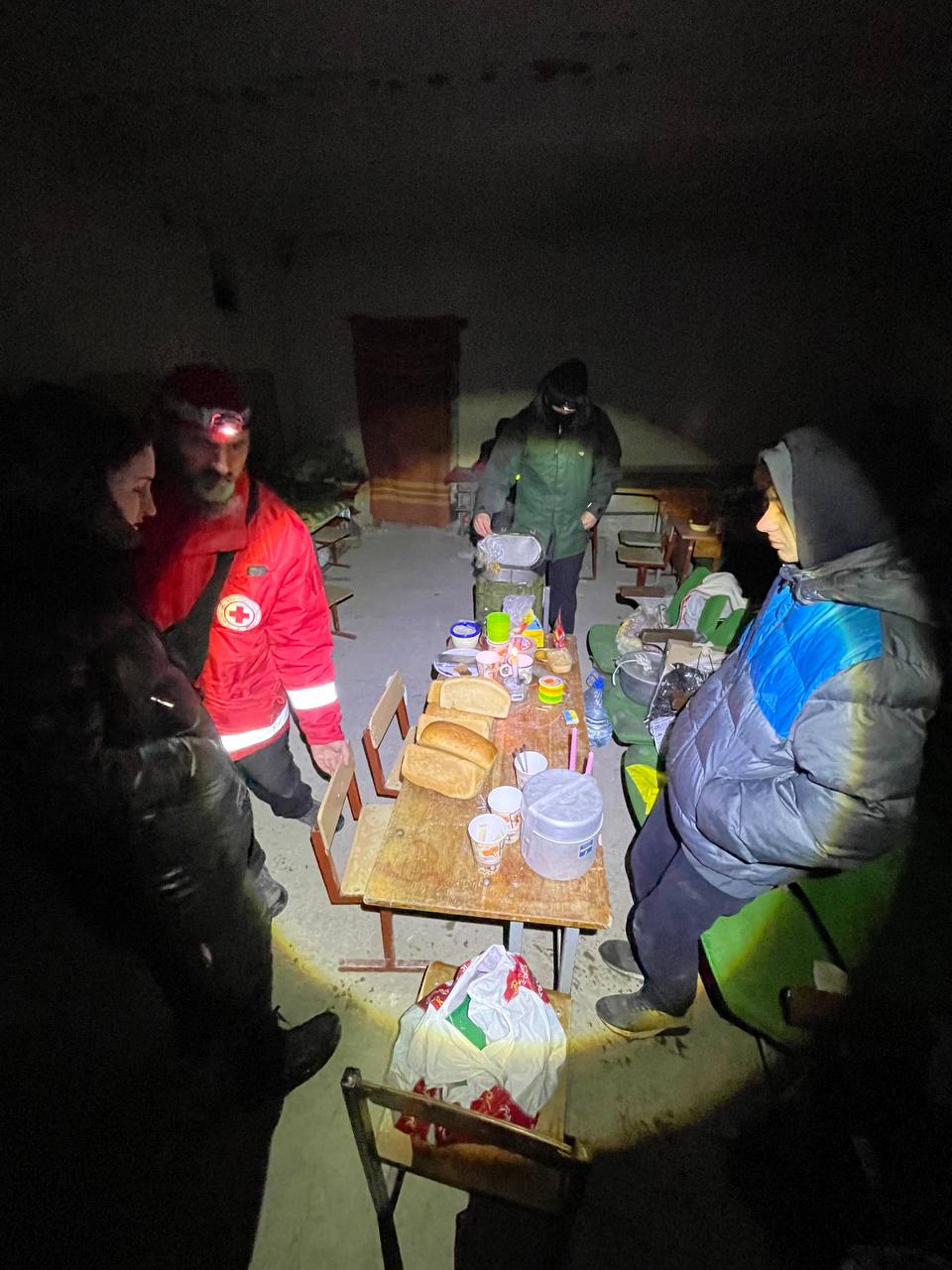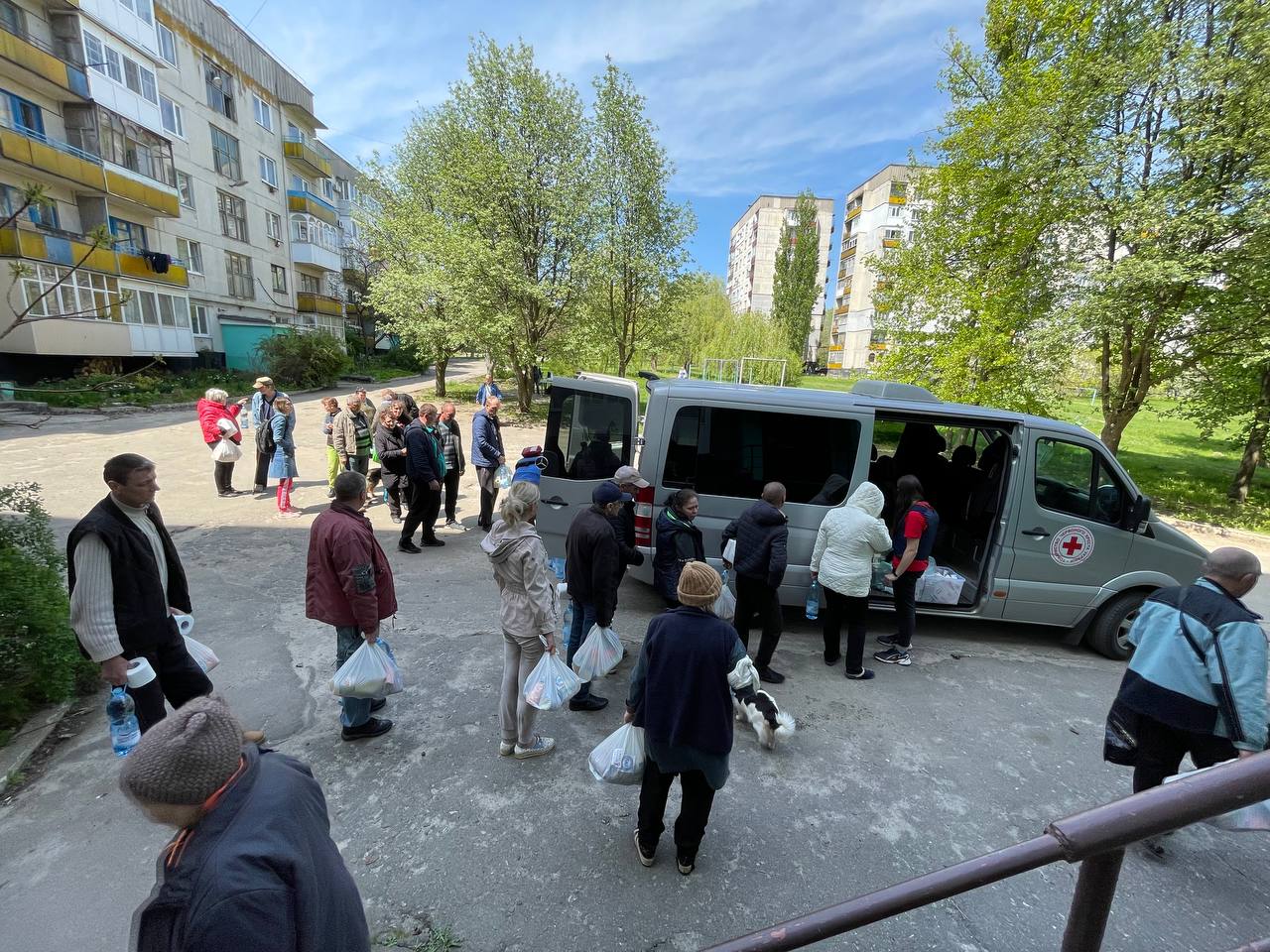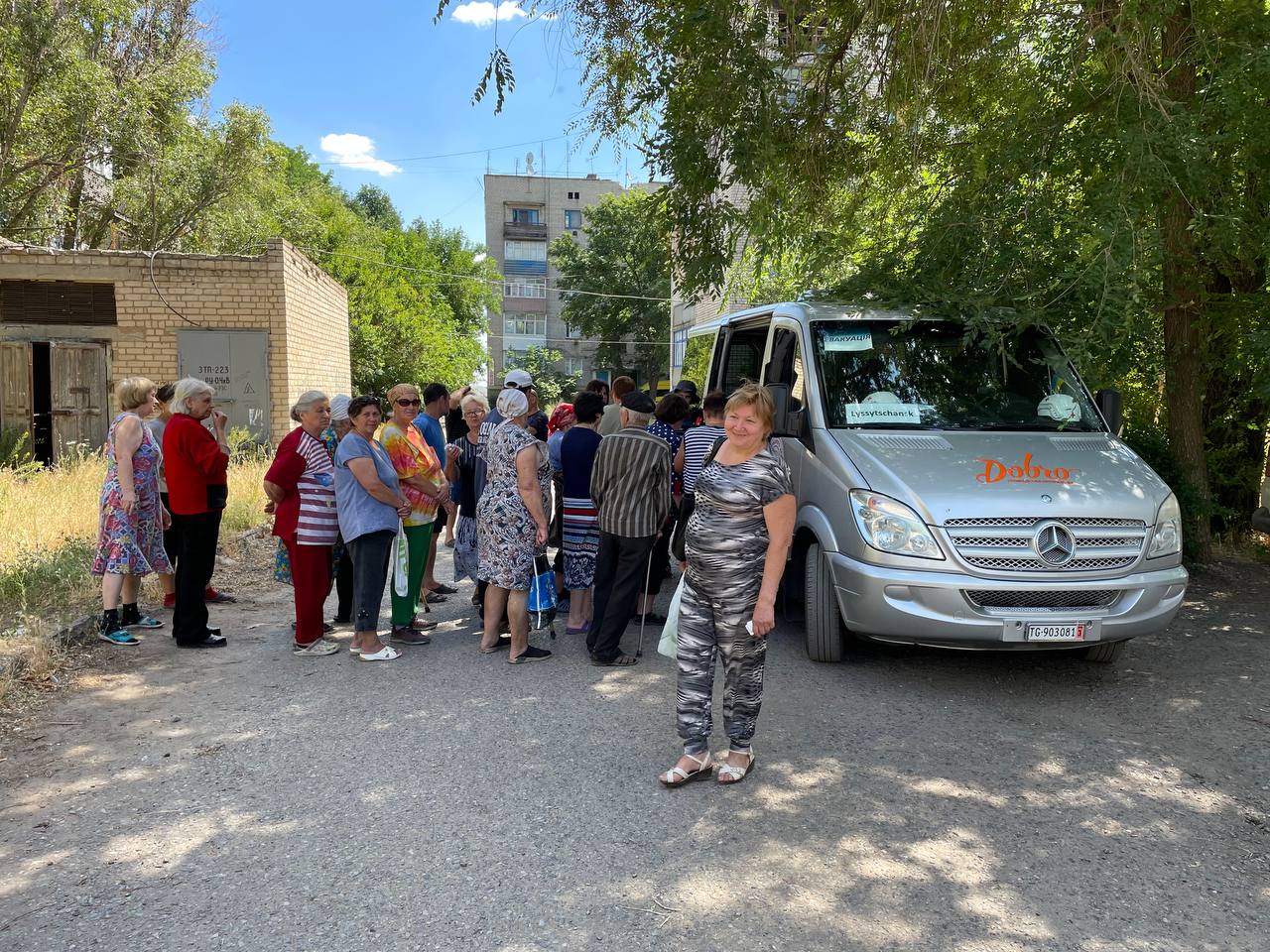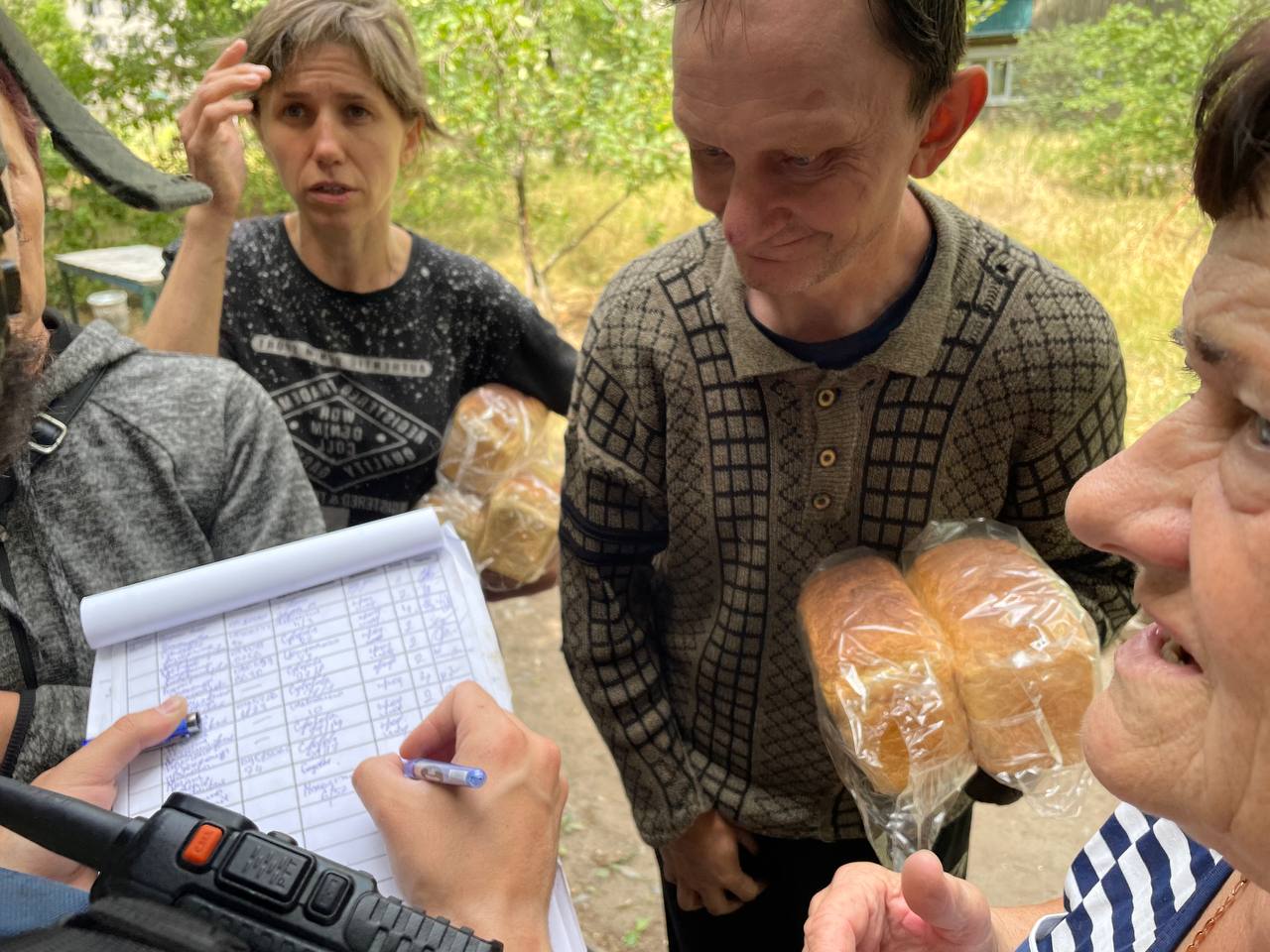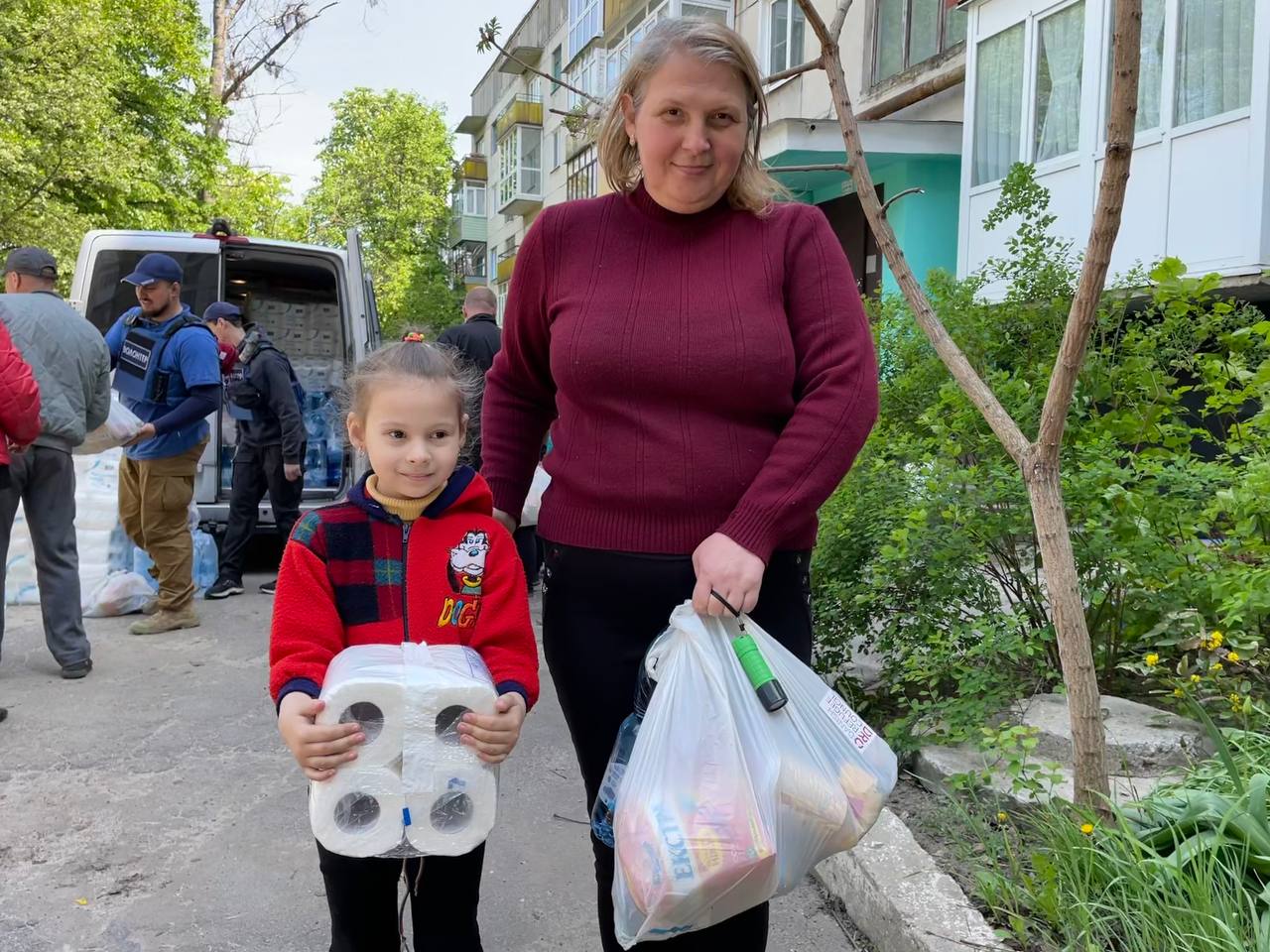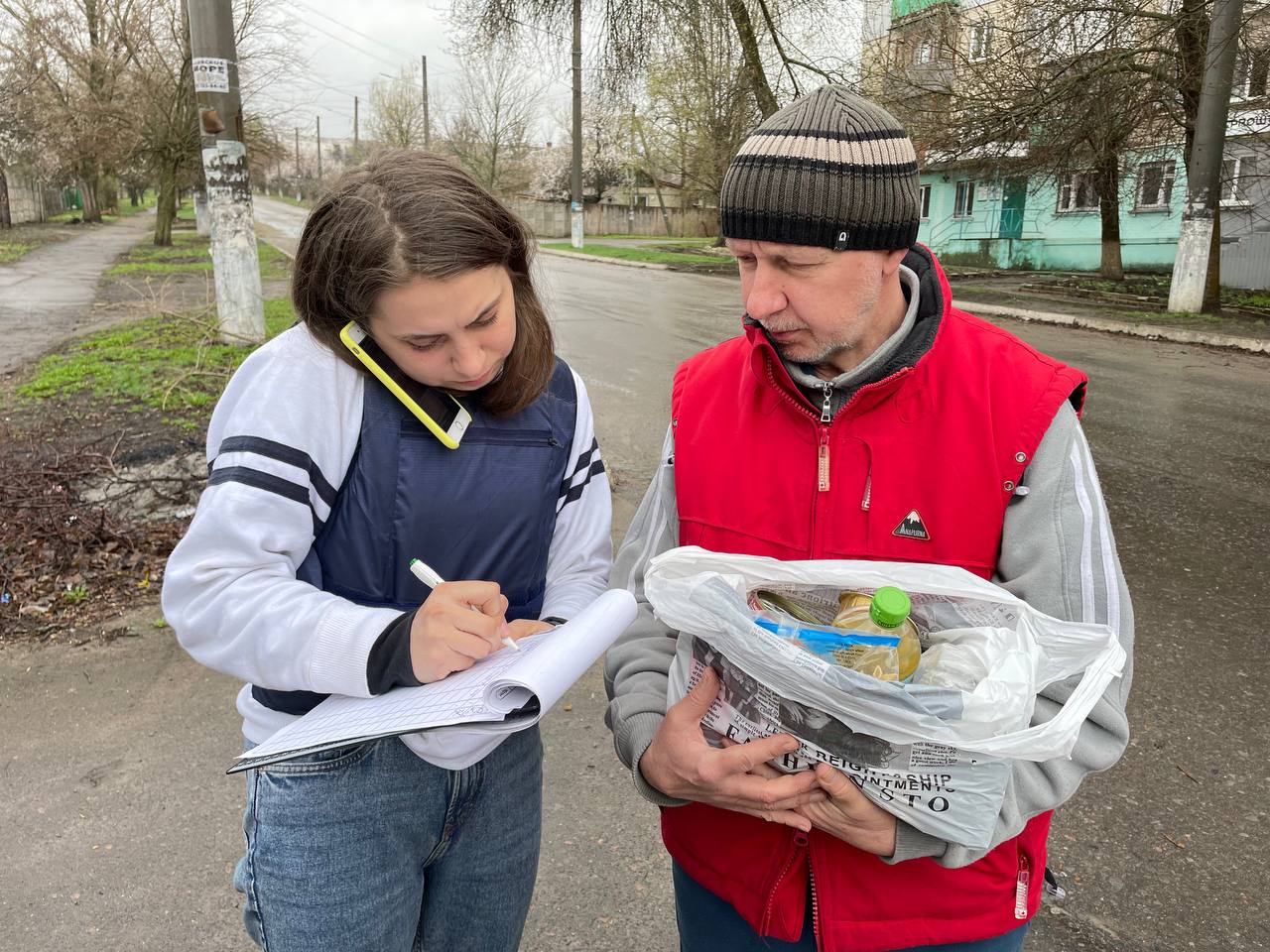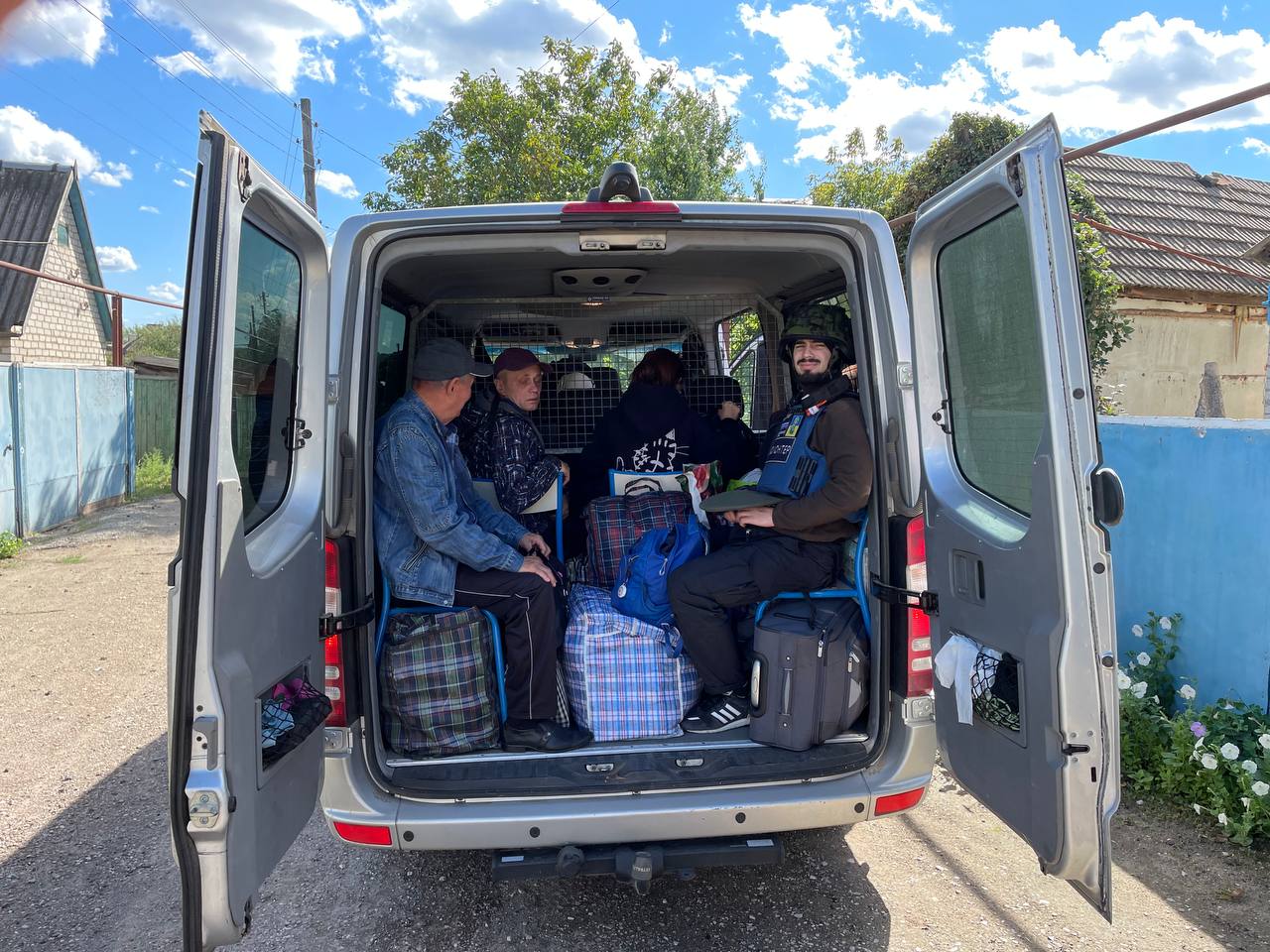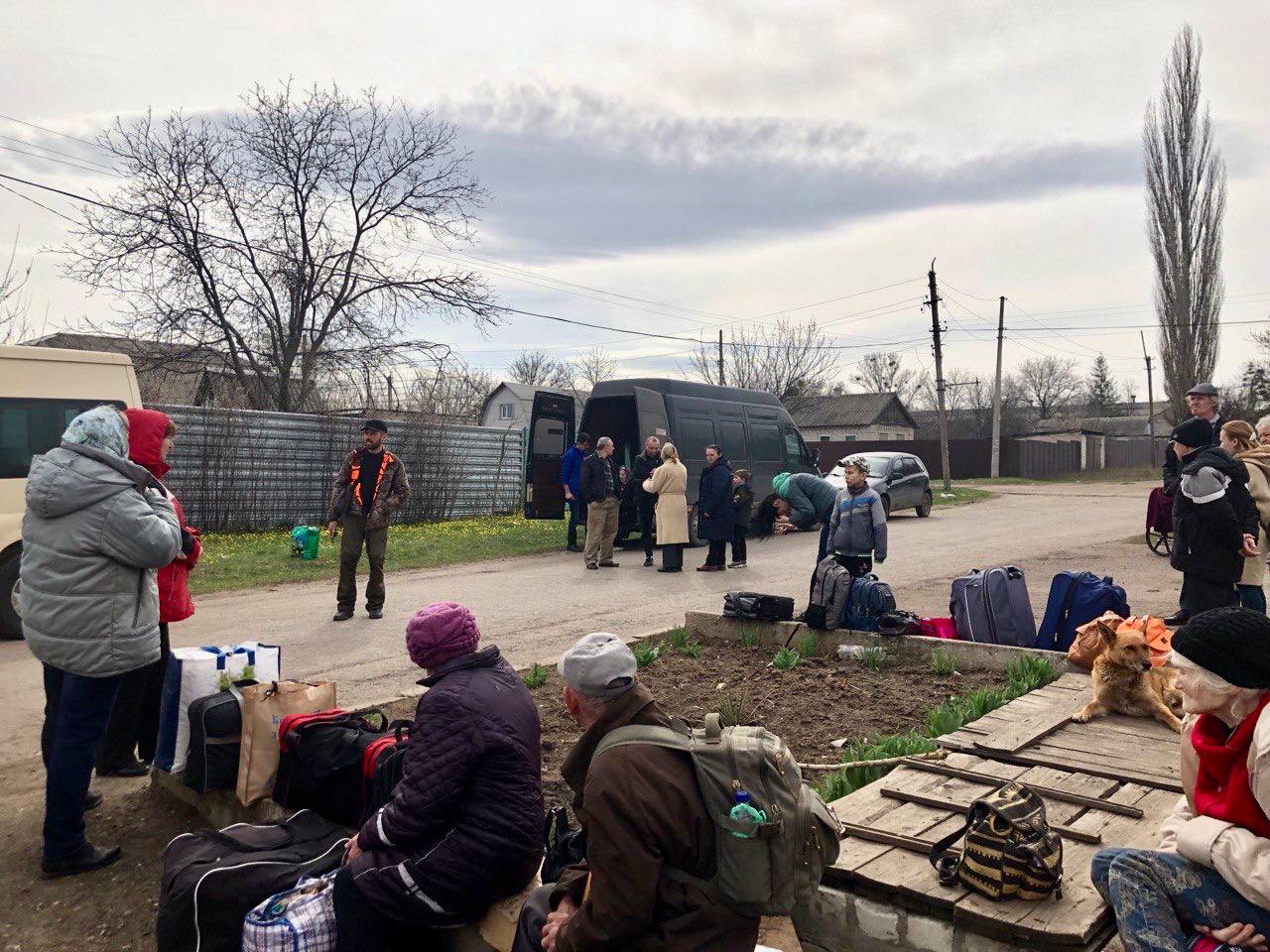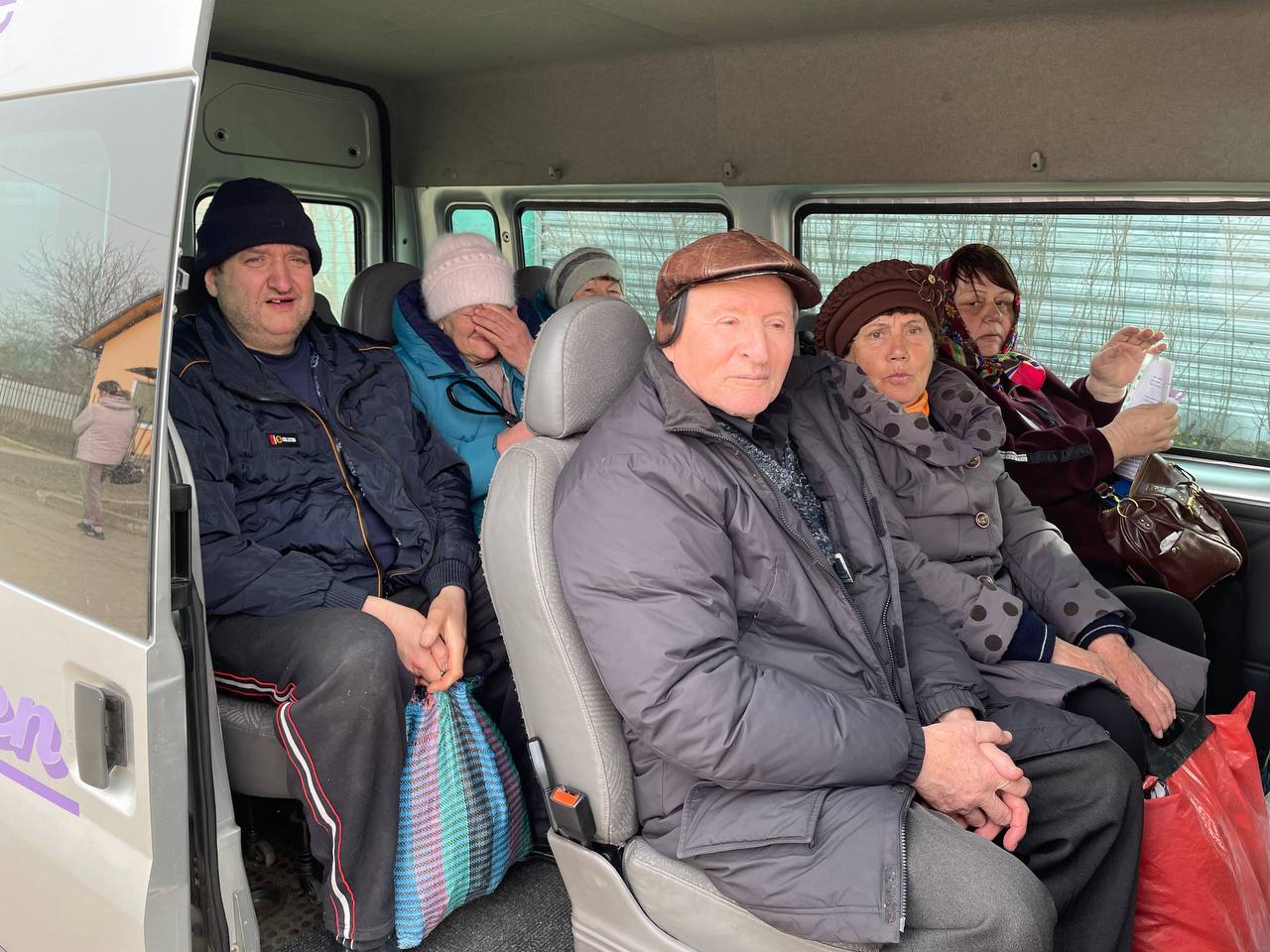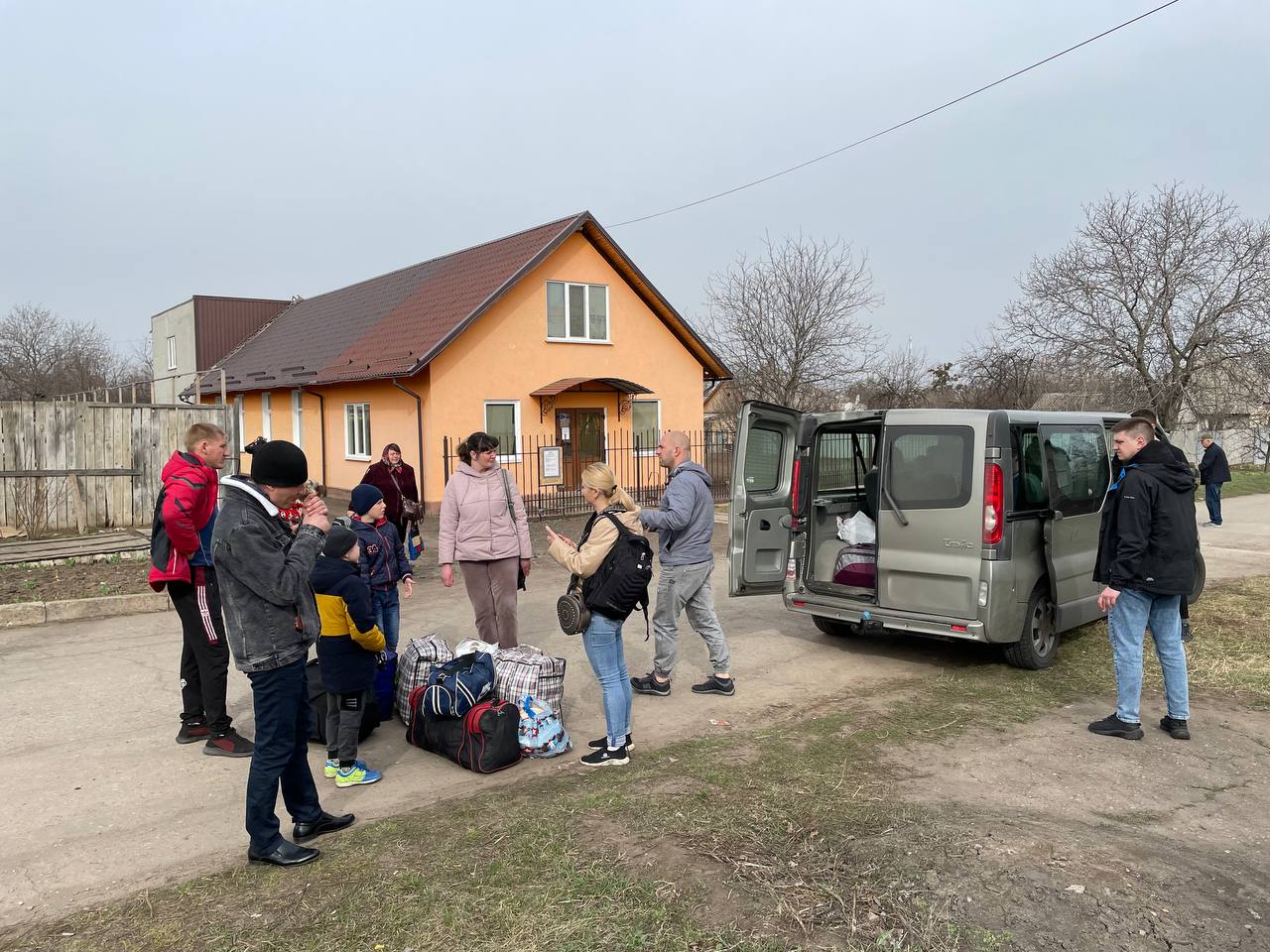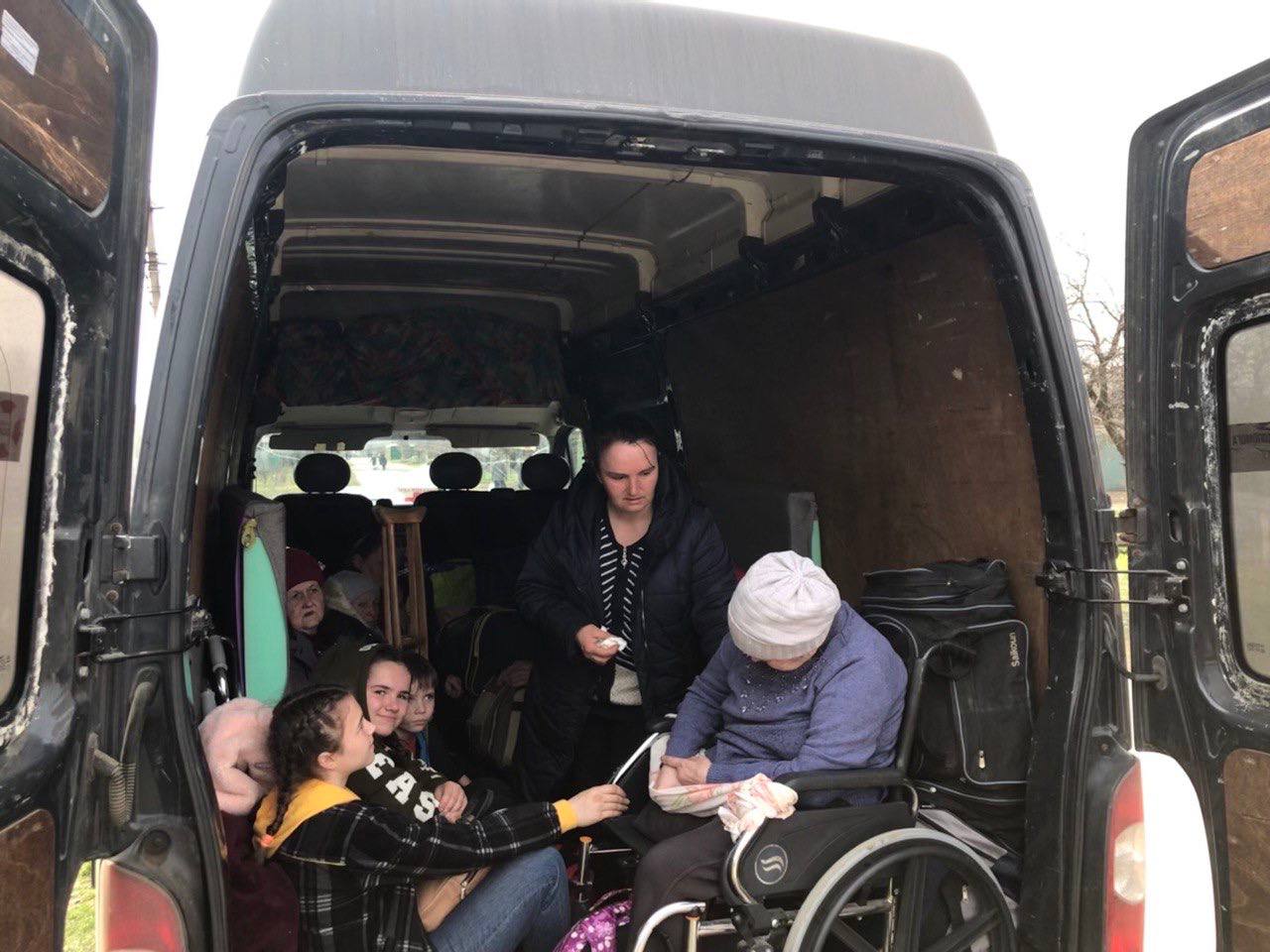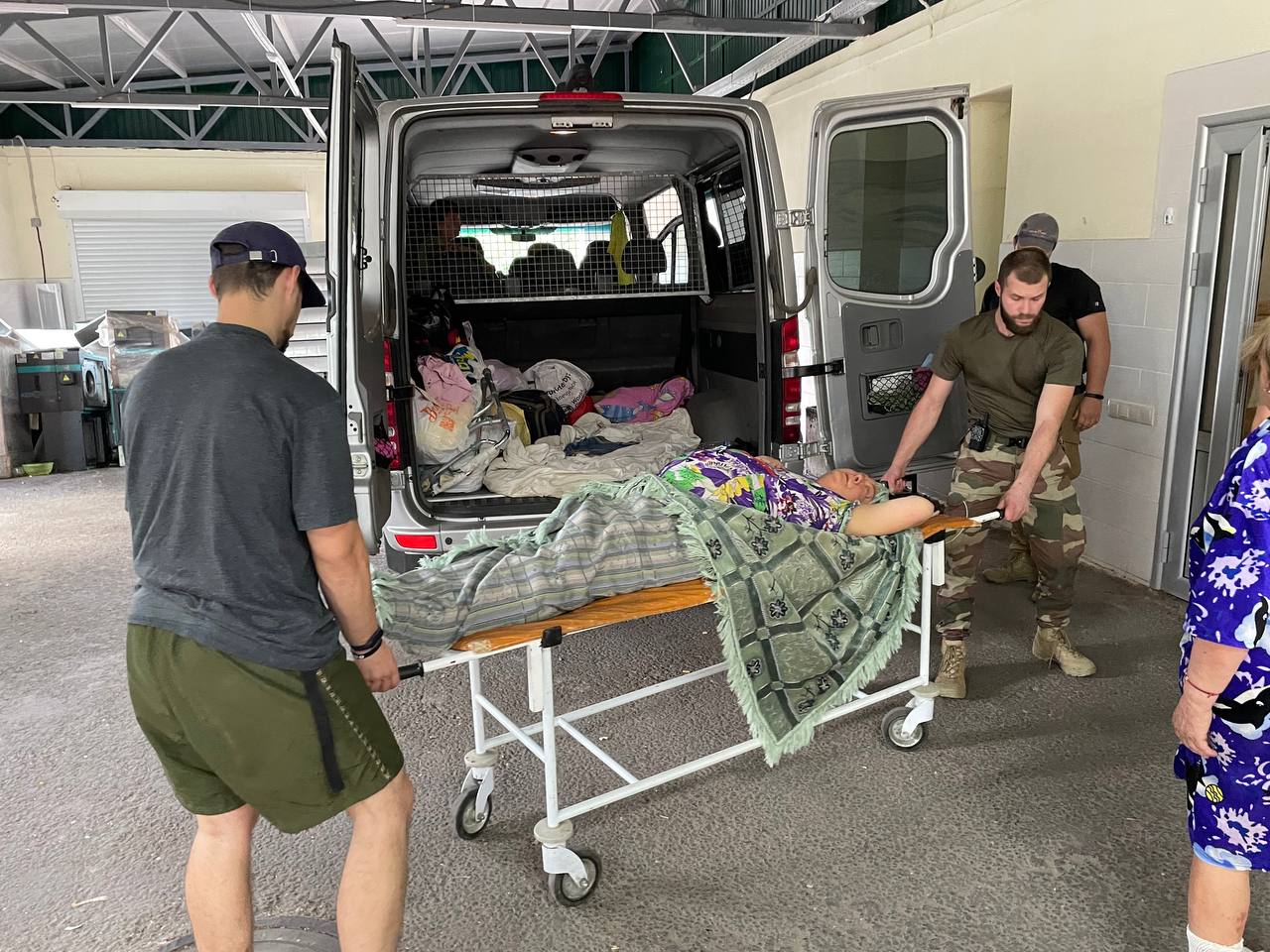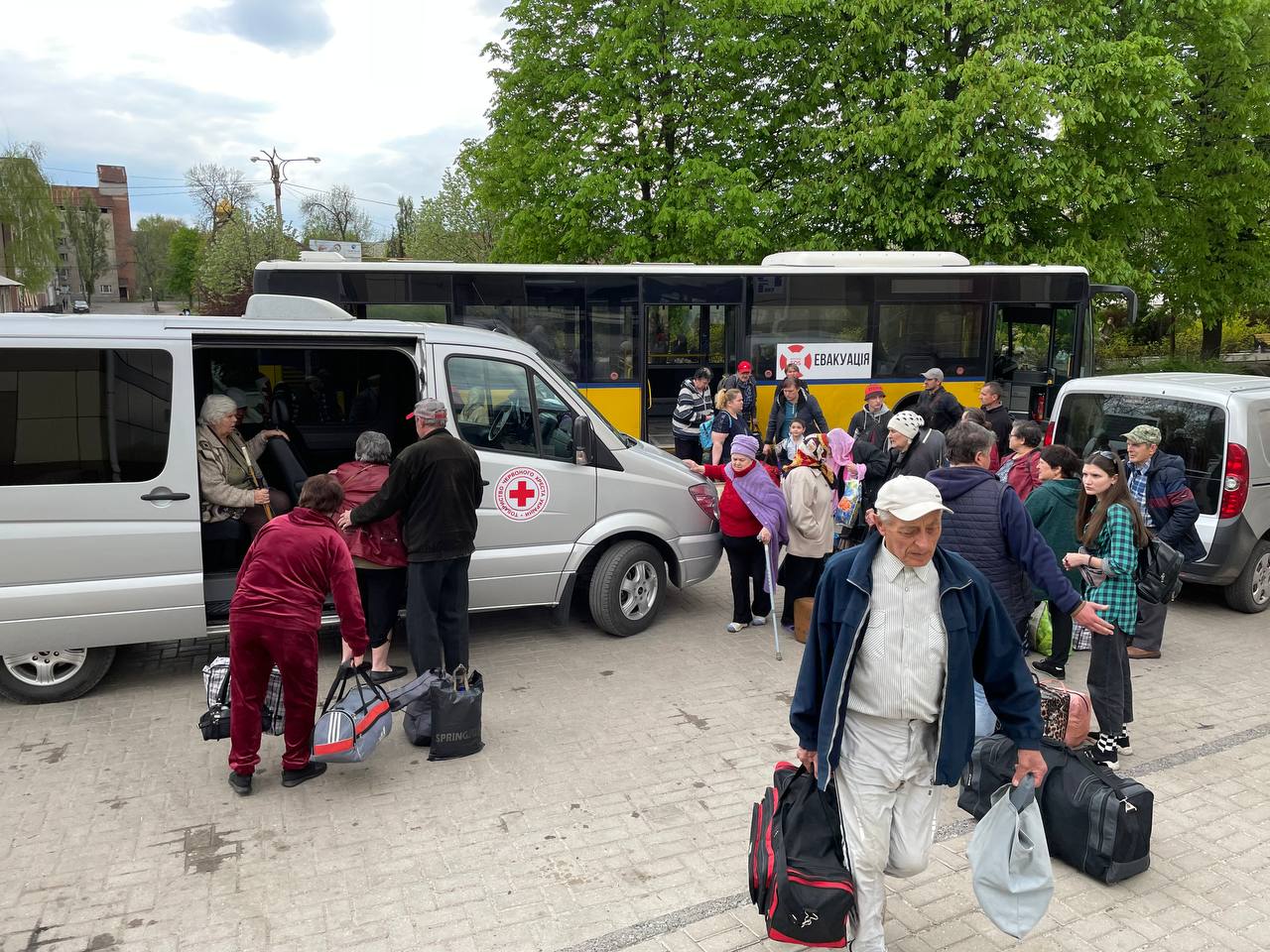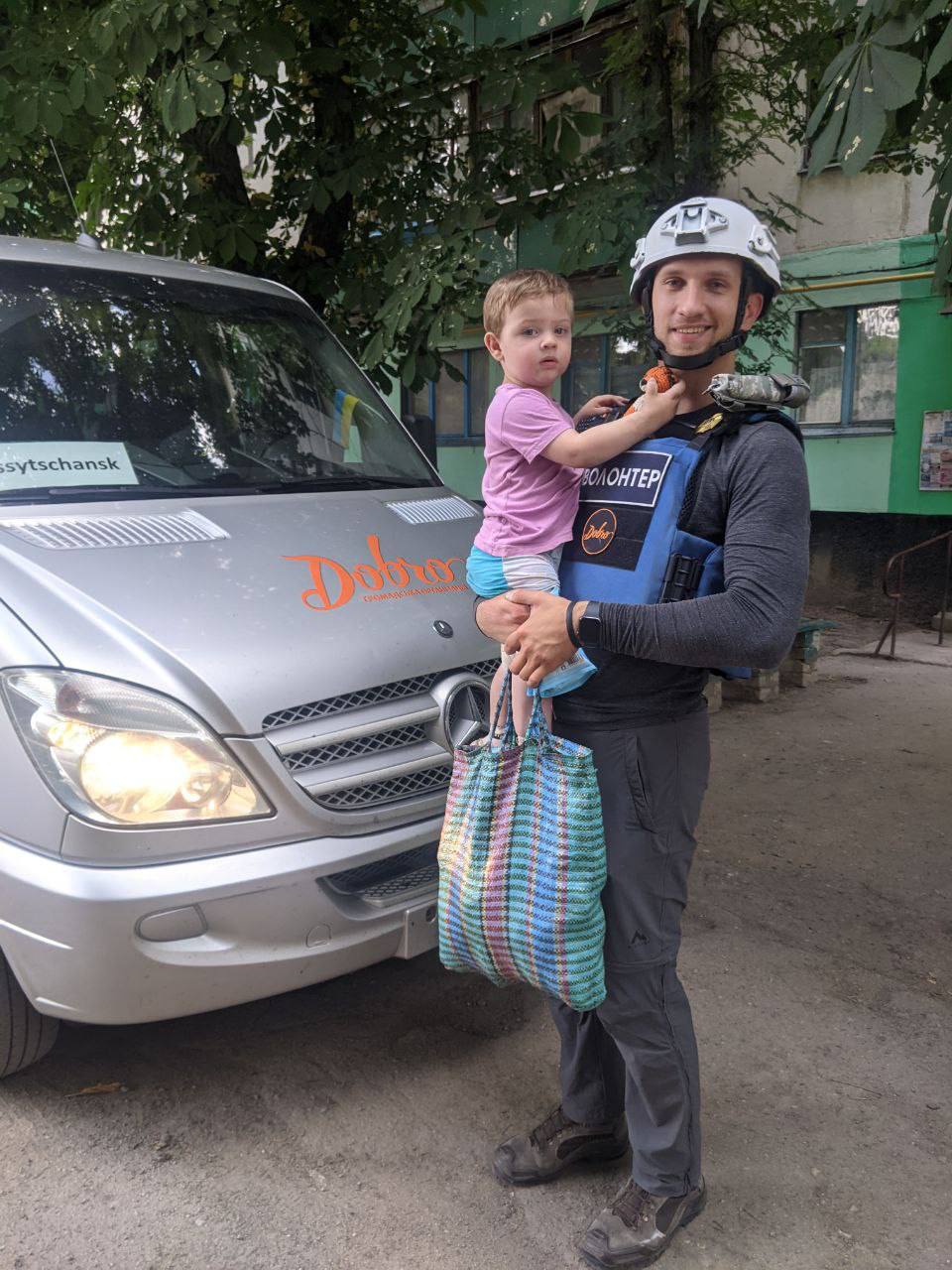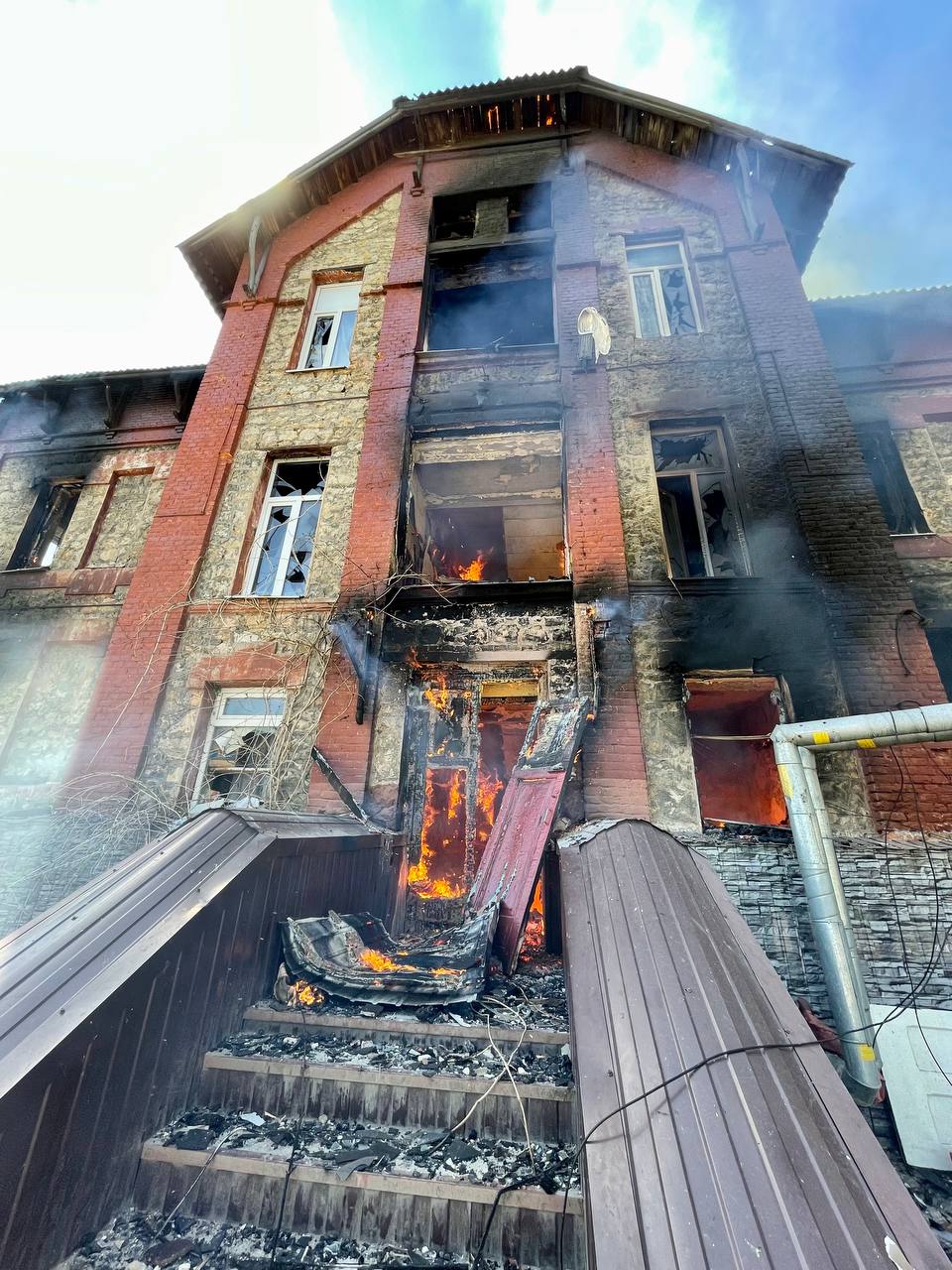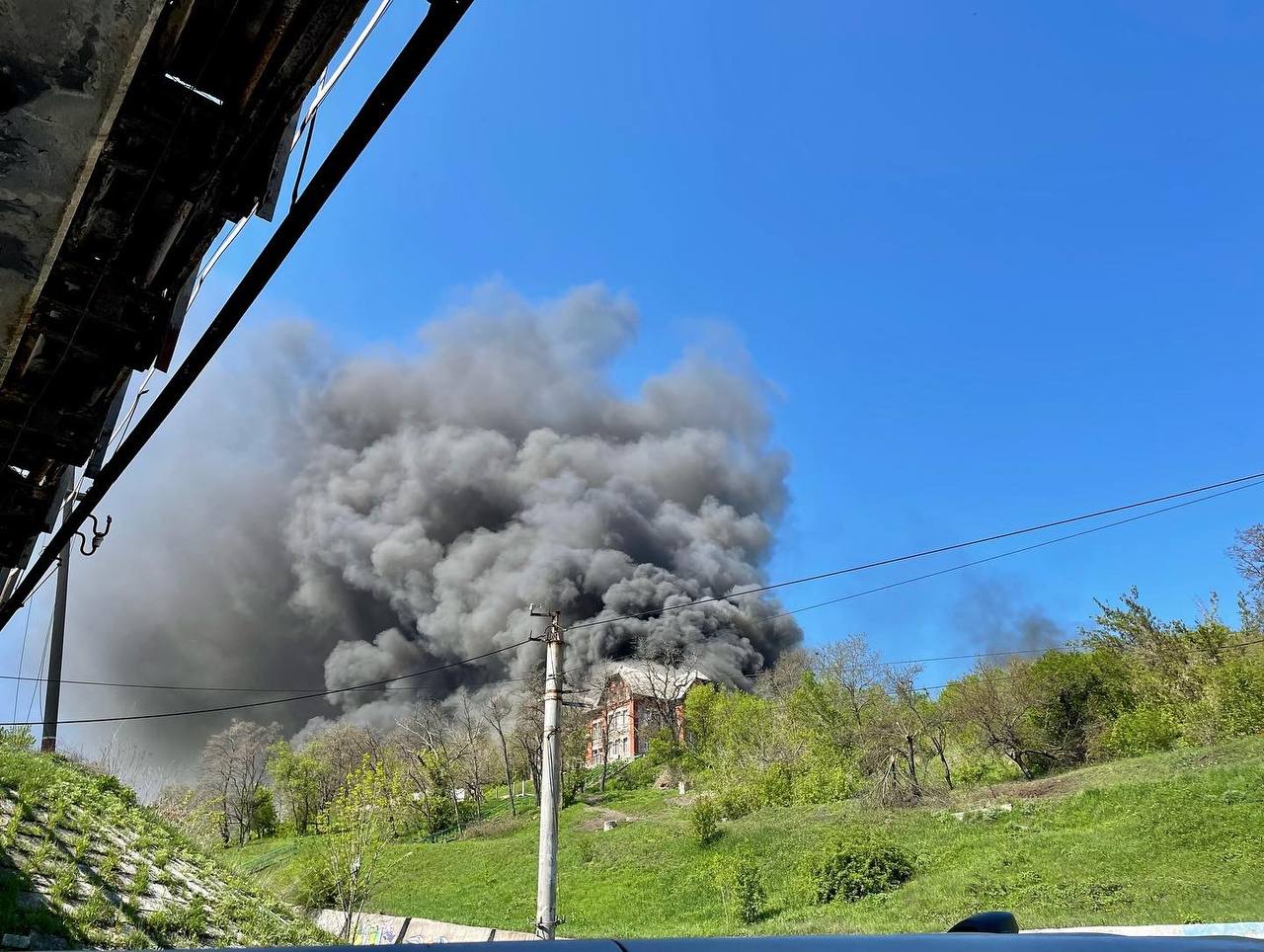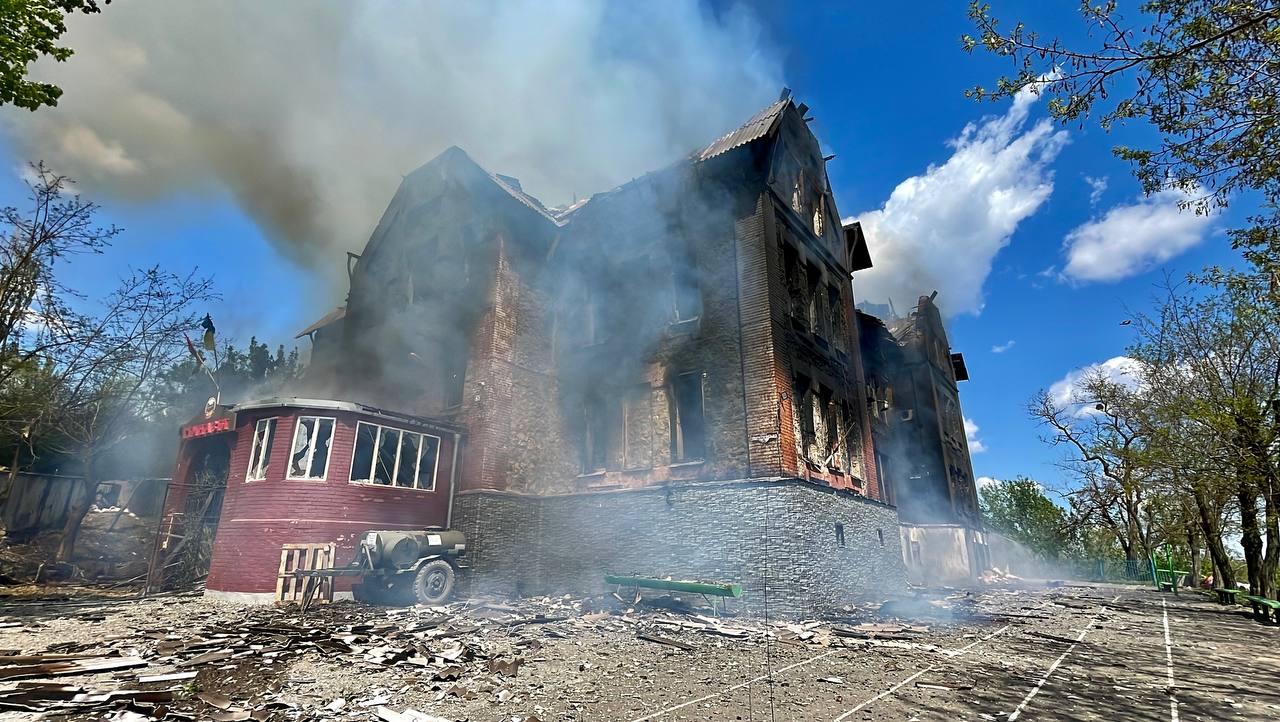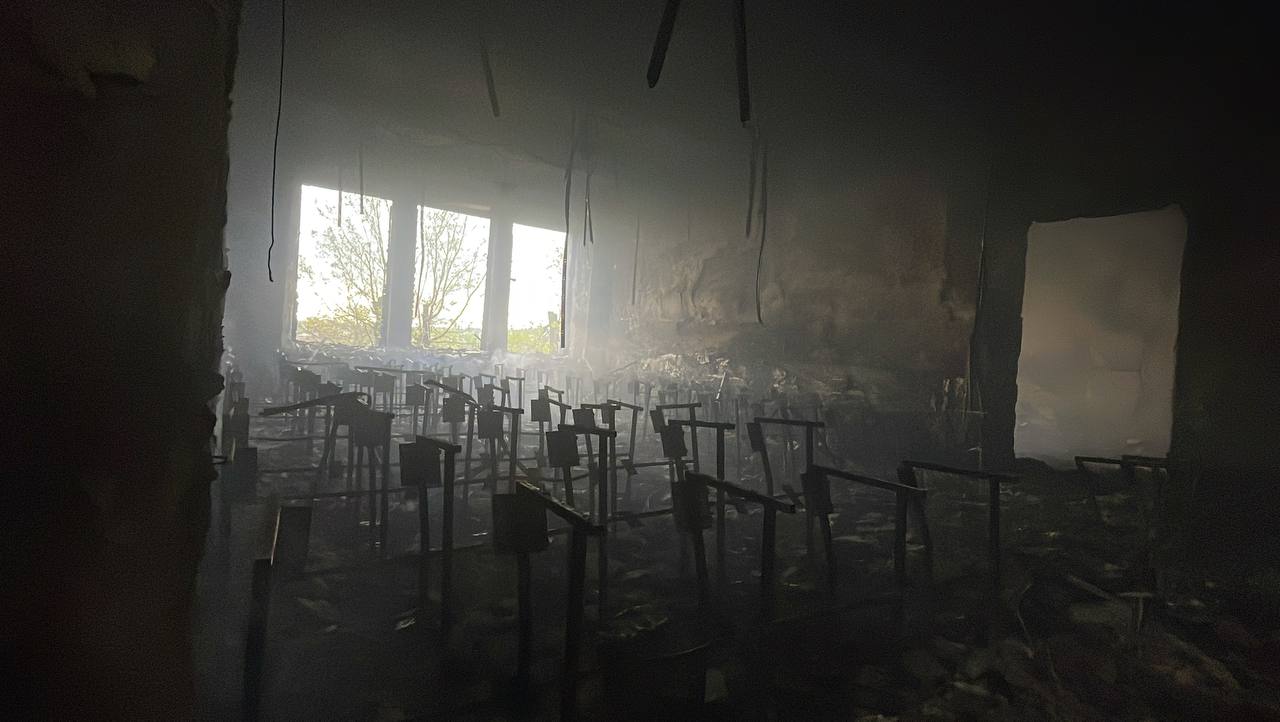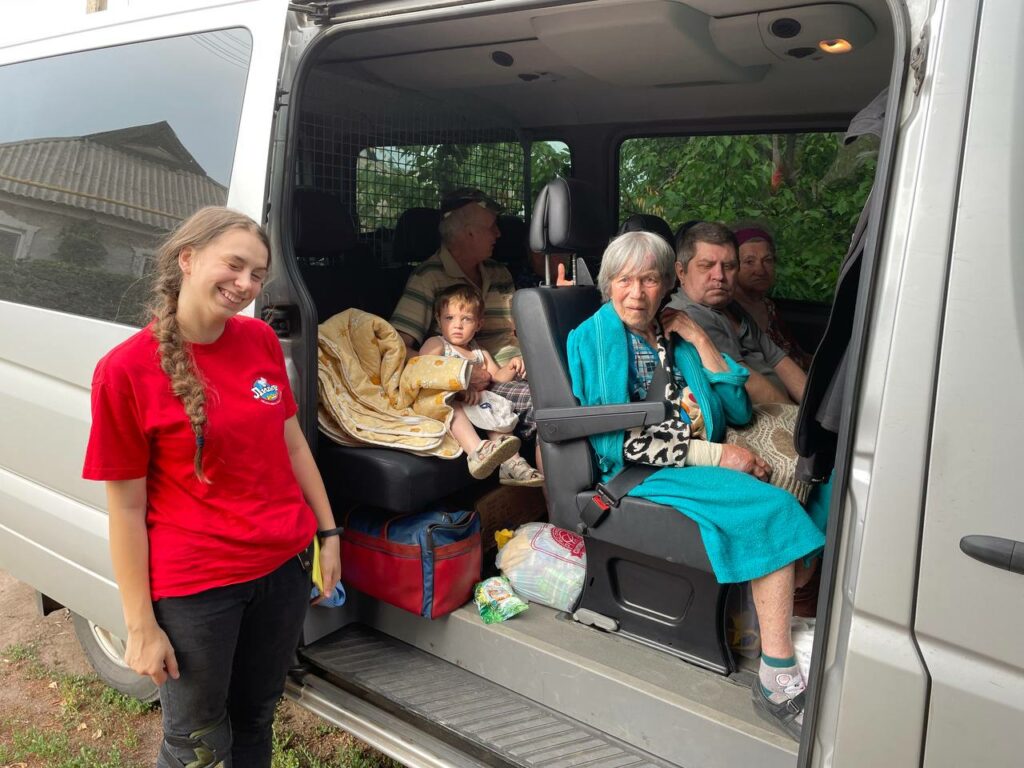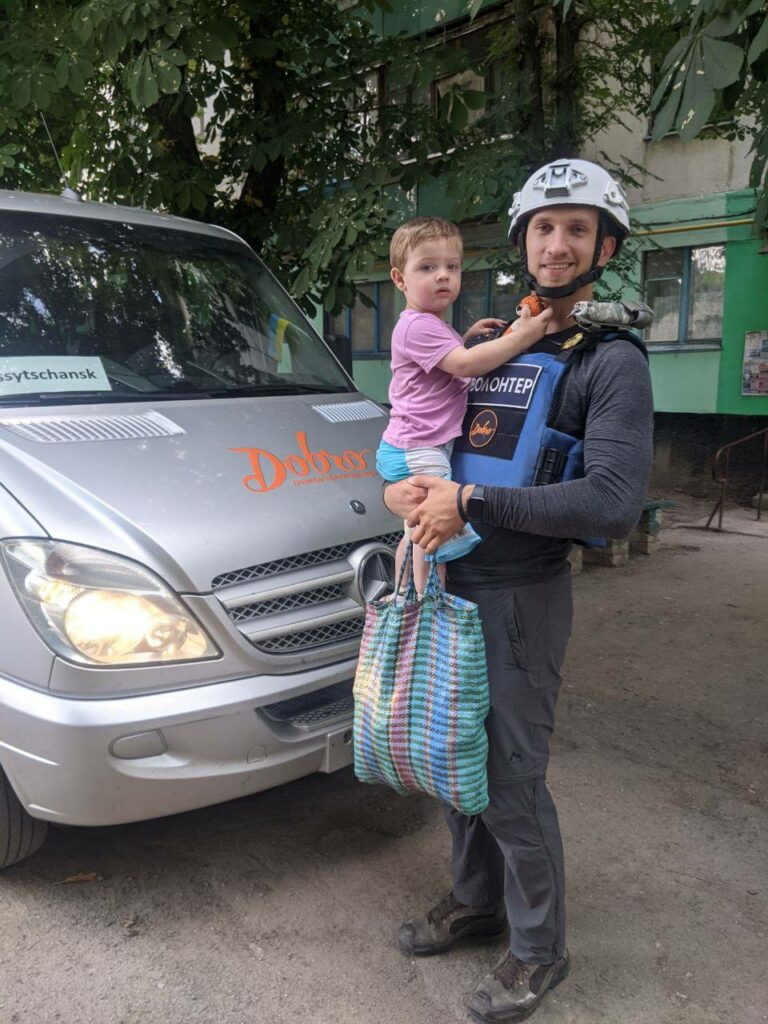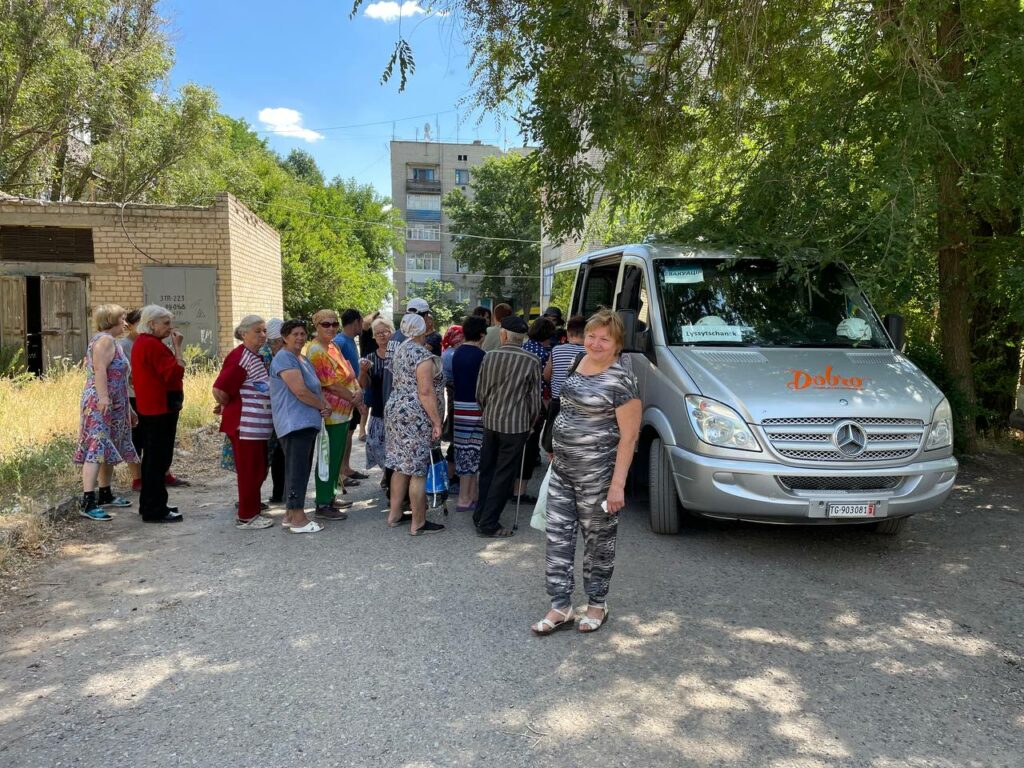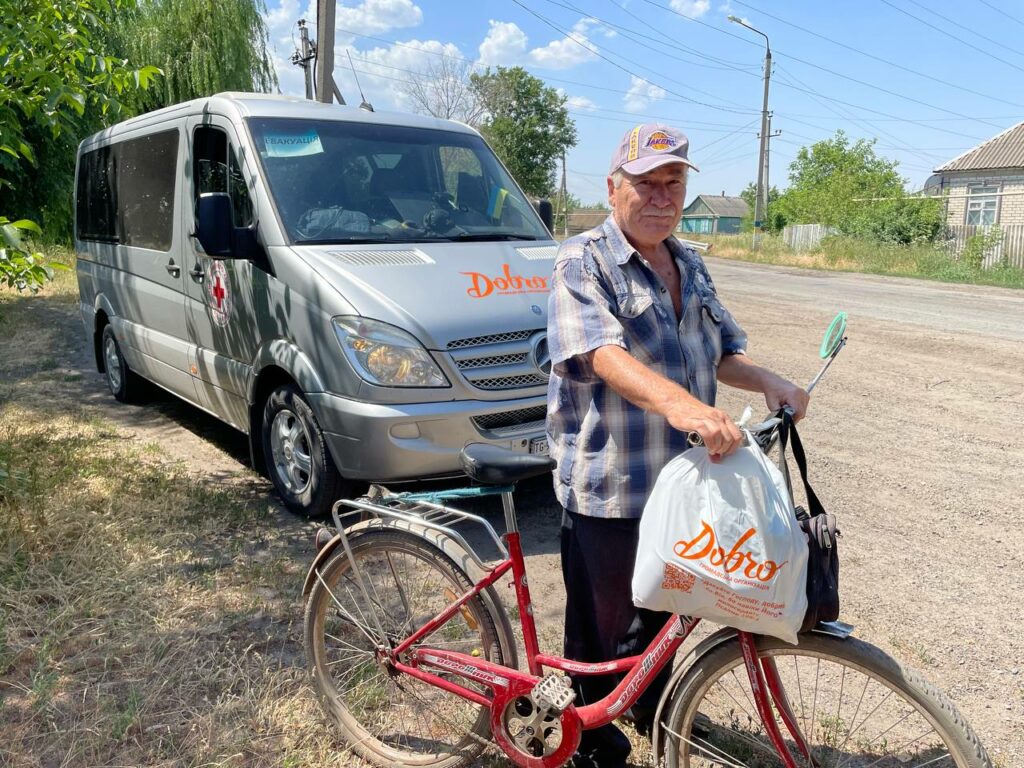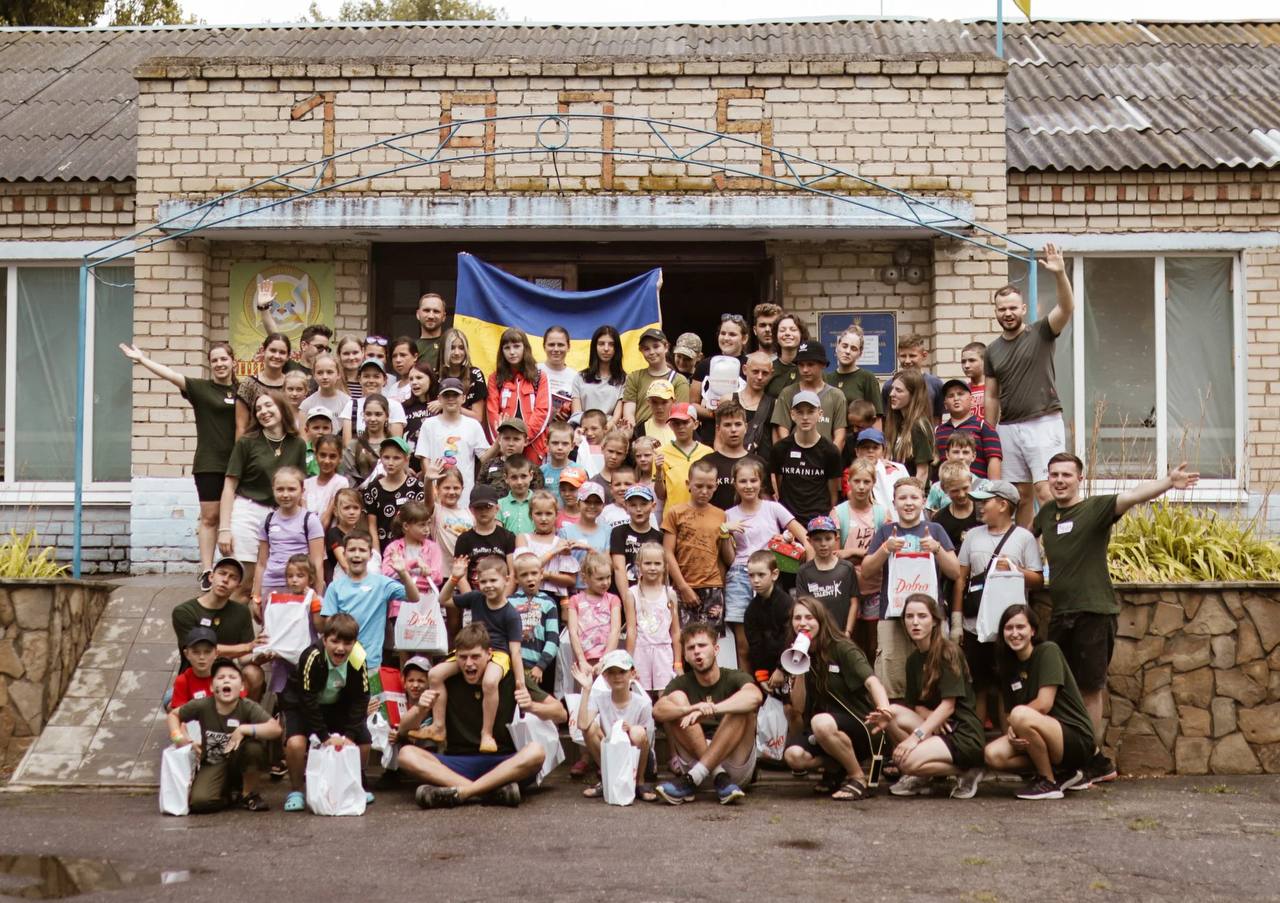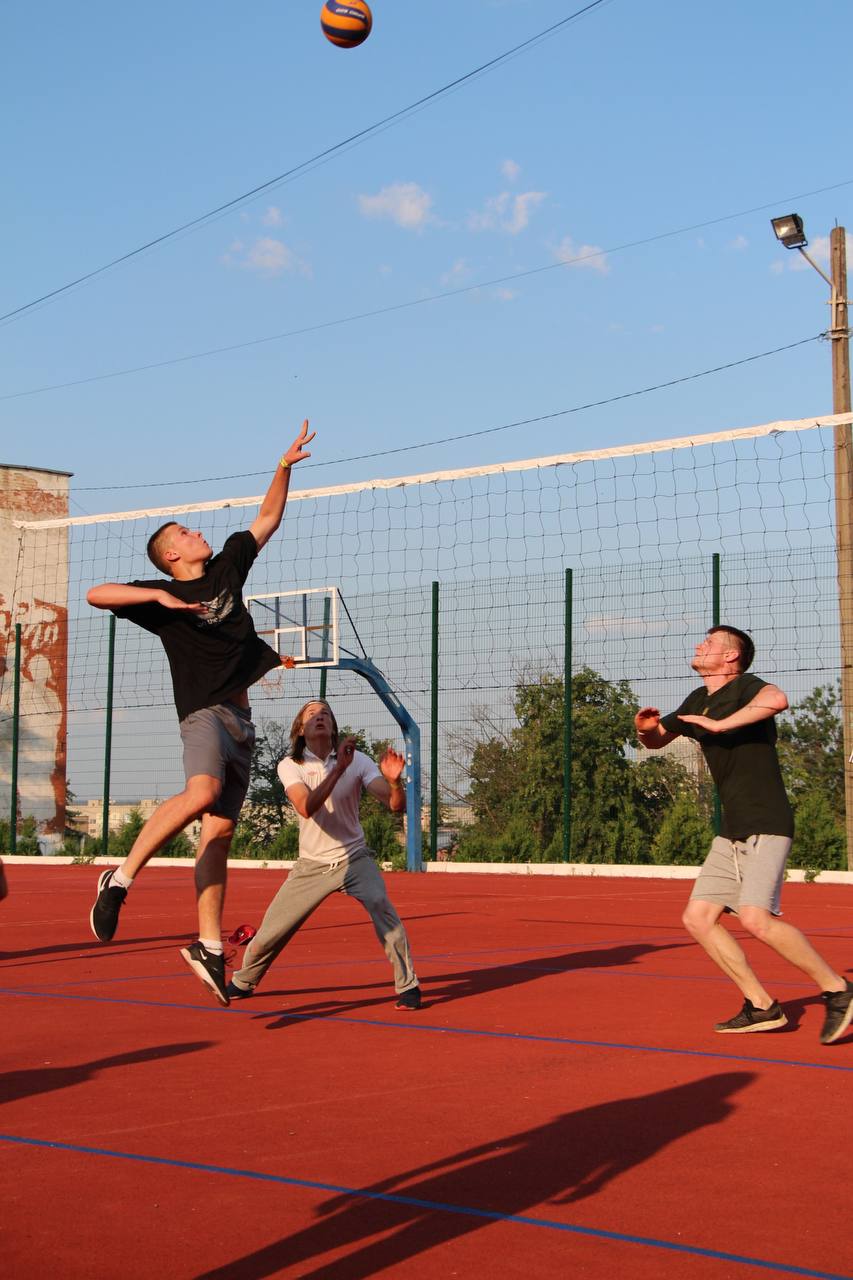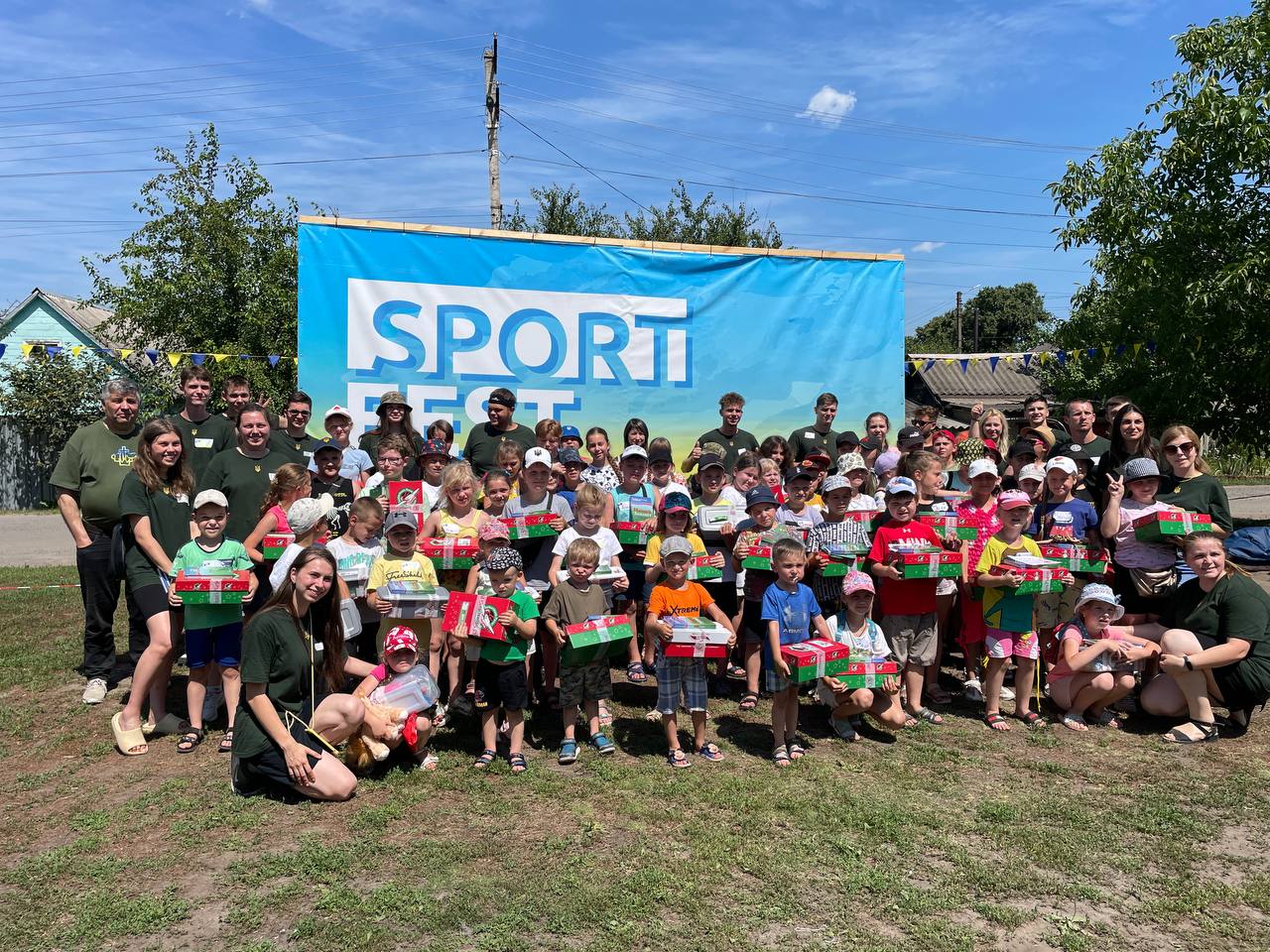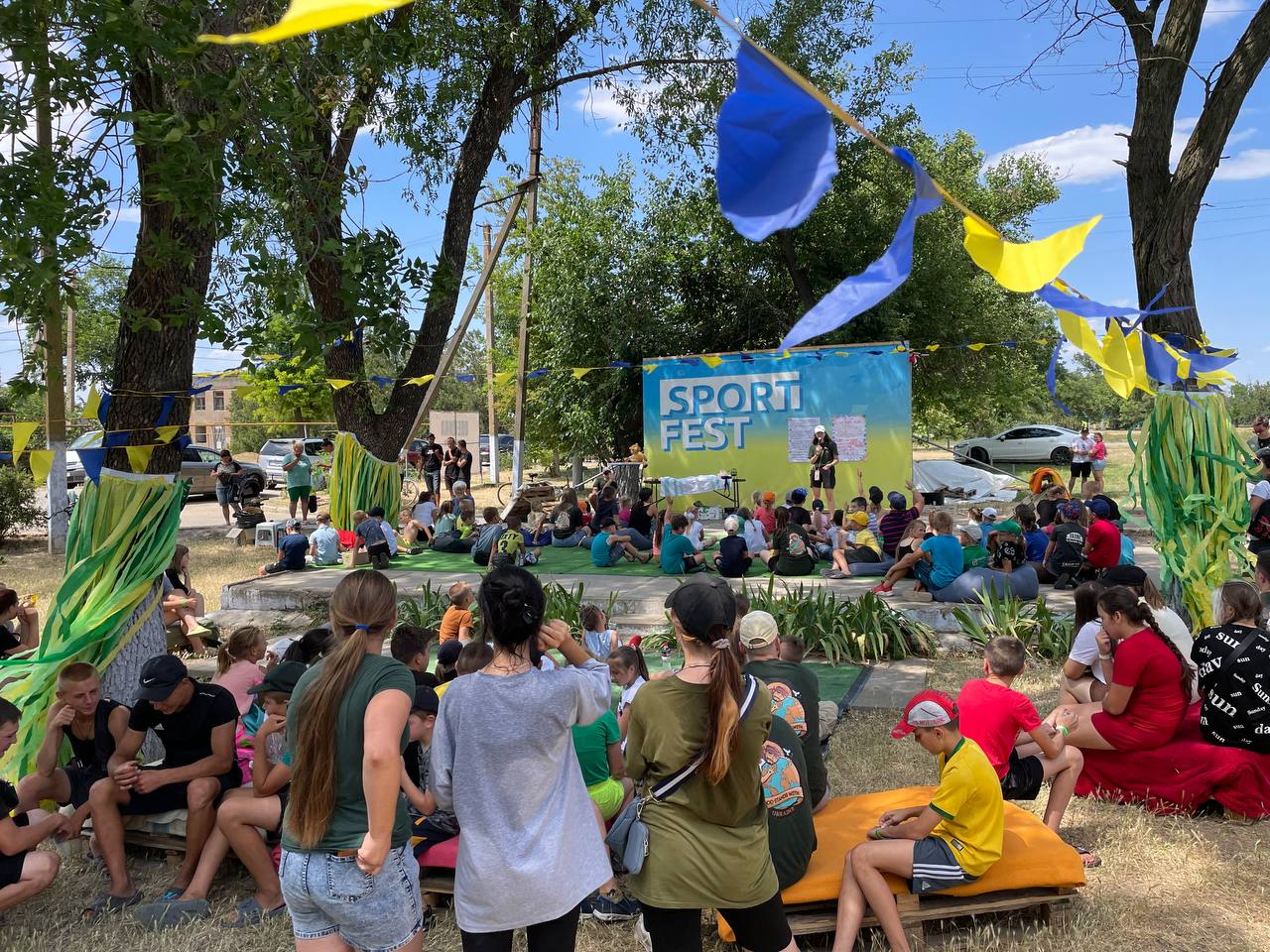The outbreak of the all-out war in February 2022 mostly took Ukrainians by surprise. But there were and are those who have seen this war and occupation since its very beginning, when Russian troops seized Crimea and part of Donbas. Roman Kozodoy from Lysychansk is one of them.
Roman Kozodoy was 26 at the beginning of Russia’s full-scale invasion of Ukraine. He was interested in geopolitics and followed the forecasts of foreign experts. Roman recalls that he took expert assessments in international publications that discussed Russia’s full-scale invasion of Ukraine as early as November 2021 very seriously. And what first made Roman listen to these assessments were his experience and memories of 2014.
Roman himself comes from the area of the rubber goods factory, which is located close to temporarily occupied Luhansk. This area, like the whole of Lysychansk, was under Russian occupation from May 22 to July 24, 2014. And although Roman was studying at Kyiv University at that time, after graduation he returned to his hometown to work for the development of the community.
His experience did not fail him
Roman Kozodoy founded the NGO Dobro Lysychansk in the Luhansk region in 2020. At that time, their work consisted in helping educational and medical institutions of Lysychansk. In the first days of the full-scale invasion, advance preparation, clear plans and situational awareness helped volunteers to provide aid to those who needed it most. And after Lysychansk was occupied, the Dobro Lysychansk team began its activities in the front-line communities, and later also in the de-occupied areas.
“Our friends and partners from Switzerland were going to visit the Luhansk region. It was in December. However, they canceled the visit because they trusted Western intelligence reports about the threat of an all-out war,” says Roman Kozodoy.
The volunteers were aware and knew from the experience of the 2014 occupation that if Russian troops advanced rapidly, they would have to help themselves and the residents of their town.
“We started thorough preparation for a full-scale invasion a month before it happened. That is, around January 2022. The people we met were skeptical about it, saying it was a waste of money. But we tried to prepare so that, if there was no war, we could use the purchased items in our future projects. We were doing double work, but we wanted to be on the safe side. We had three plans: in case of evacuation, in case of mobilization of part of the team, and in case of occupation,” the volunteer recalls.
So, even before the full-scale invasion started, volunteers began buying things that would come in handy. These included half a ton of diesel fuel and the same amount of gasoline, firewood, gas cylinders, generators, radios and other communication equipment, long-term storage food, medicines and hygiene products.
“I still have the documents on the purchase of all this stuff, because we bought everything officially, through the organization’s bank account. We understood that if there was a war, communication would be lost in any case, so we bought a set of seven radios with extra antennas and batteries. We bought special water heaters, buleryans (long-burning stoves — ed.), batteries, flashlights, and chainsaws. We realized that we would need all of this,” says Roman.
The beginning of Russia’s full-scale invasion of Ukraine: a volunteer’s memories
“On February 23, my friend called me and said, ‘Look, Rom, everything we’ve been preparing for is going to start in the next 24 hours.’ He had this information from a trusted source. There was no reason not to trust it; the information was clear and understandable. I was ready. We worked, didn’t panic, did everything we’d planned,” says Roman Kozodoy.
According to Roman, the Dobro Lysychansk team was psychologically ready for a full-scale invasion, so on the morning of February 24, 2022, when the Russians crossed the border, volunteers gathered at their headquarters to discuss further actions. The first thing they did was to prepare the premises to accommodate people. Then they put up announcements around the town that their organization was providing humanitarian aid.
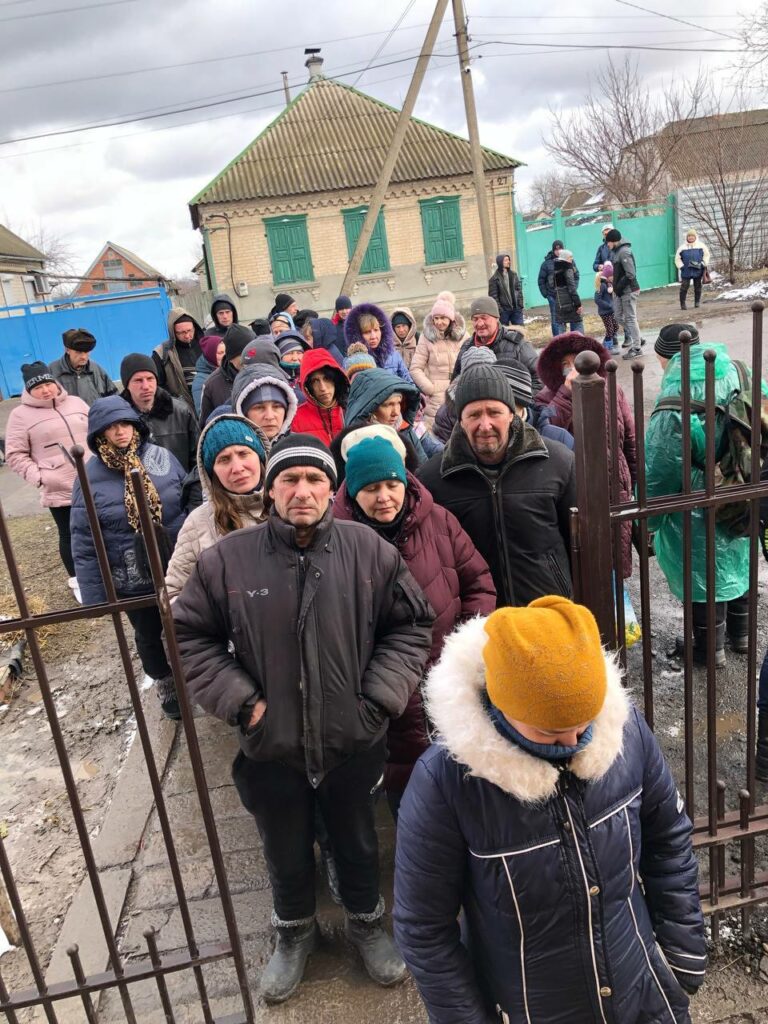
“We prepared for the worst and thought that the front would move quickly, and we would have half a day or a day at most to fortify ourselves, and then either go to the army or evacuate from the occupation. Shops, banks and pharmacies in the town were closed, and this is where our help was needed. We had enough humanitarian aid for about six weeks, just before the first humanitarian aid started arriving in the town,” says Roman.
On different days, the headquarters of Dobro Lysychansk received from 20 to 600 people who asked for help. Volunteers delivered aid to people with limited mobility, and hot meals were delivered to those hiding in basements from Russian shelling.
Volunteers hand out humanitarian aid to people in Lysychansk/ photo by Roman Kozodoy
Over time, the volunteers began to receive requests not only from different parts of Lysychansk, but also from the nearby towns – Hirske and Severodonetsk.
“Problems with electricity supply began a week after the all-out war started. We had a generator, so people came to our headquarters to charge their phones to keep in touch with their families. Moving around the town was quite dangerous from the first days of the full-scale invasion. “There was not a single day when our town and our neighborhood weren’t shelled,” says the volunteer.
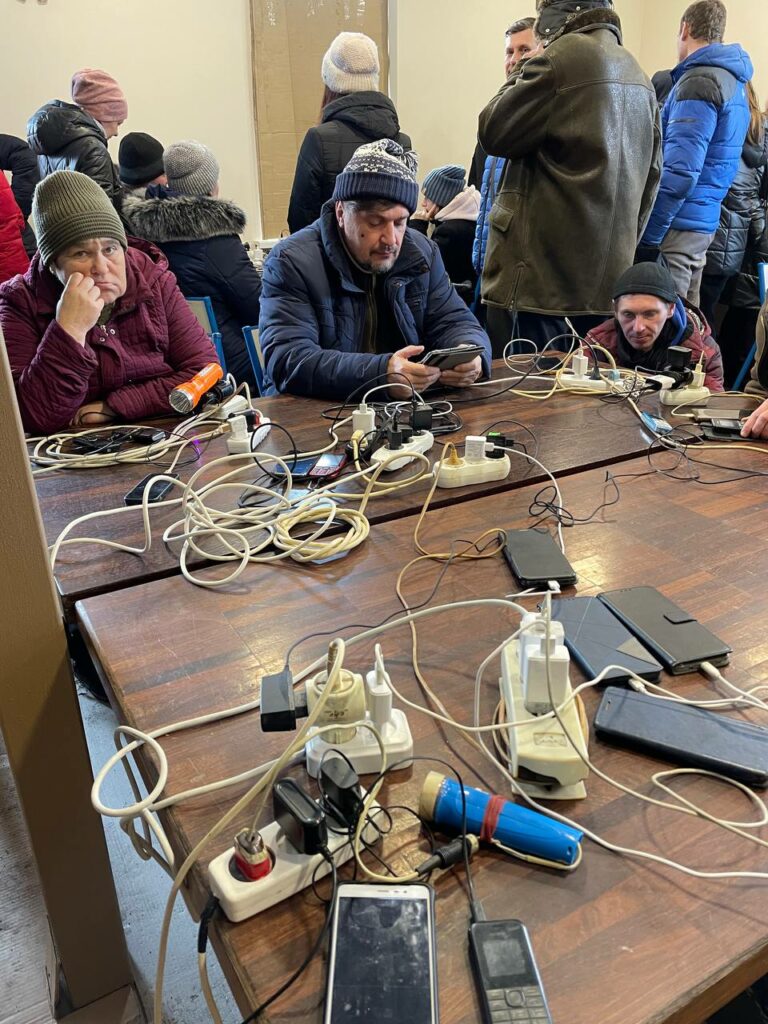
Once, a shell fell 25 meters away from the NGO’s headquarters. It completely destroyed a residential building, shattered the windows, roof and facades of the NGO’s premises. No one was injured then.
“We planned everything in such a way that if our headquarters was shelled, we would evacuate our team and switch from distributing humanitarian aid to evacuating people. In April, we moved our headquarters to Myrnohrad and went with help to Lysychansk every morning,” says the founder of the NGO.
Eventually, it happened. Gradually, besides providing humanitarian aid, the volunteers began evacuating people from their hometown. In particular, people with limited mobility, elderly people and large families.
Volunteers evacuate people/ photo by Roman Kozodoy
“We didn’t have a lot of transport, so we simply took people by car to the evacuation trains in Lysychansk and Rubizhne during our frequent trips. The trains ran until March. Then an evacuation point was organized in Novozolotarivka and we drove people there. Later we started taking people to Pokrovsk,” says Roman.
The volunteers traveled to Lysychansk as long as it was possible and there was a chance to get there safely, Roman notes. However, Roman and his team repeatedly came under fire.
“Once we were going down Kirova Hora when we saw a large building on fire. It was the gymnasium. On the road and on the road side, there were fragments of bricks and wood scattered by explosions,” Roman recalls.
Roman is a graduate of that Lysychansk multidisciplinary gymnasium. The man says his first thought was to run to put out the fire with his own hands, but he stopped because he heard shells all around him.
The Lysychansk gymnasium burned down as a result of Russian shelling/ photo by Roman Kozodoi
The gymnasium burned to the ground. According to Svitlana Belukha, the director of the Lysychansk multidisciplinary gymnasium, the school building was a Belgian heritage. It is an architectural monument that almost all residents of the town knew about.
“Then the military, who were on road side, advised us to hide, because massive Russian shelling had just started. We hid under the bridge over which the railway passed. We parked the car and hid between the bridge columns. The shelling was carried out with large-caliber artillery. We waited… Eventually we understood where it was coming from, calculated the frequency of the shots, and left during a pause. When the shelling stopped, my team and I returned to the place where we were hiding, and saw that it was completely mangled and in some places destroyed. If we had stayed there, who knows if we would have survived… God saved us; it’s a miracle for us. There were many such miracles,” says the man.
Despite the threat to their lives, the volunteers continued going to Lysychansk. They managed to involve international partners. They went to the town with humanitarian aid and on the way back they picked up those willing to evacuate.
“On June 28, my team and I were in Lysychansk for the last time. On June 29, they didn’t let us in, because the Ukrainian troops were already leaving the city, it was very dangerous,” says Roman.
The situation in Lysychansk significantly worsened in June 2022. At that time, the town was already surrounded by invaders. The shelling never stopped. Since June 25, there have been bloody battles for the city.
And on June 27, a mass tragedy occurred: when people were collecting water from a delivered cistern, the Russians fired at the crowd of people from Uragan. Eight people were killed, and another 21 were injured.
Already on June 30, the occupiers took positions in parts of the oil refinery, and on July 3, the Russians completely occupied Lysychansk.
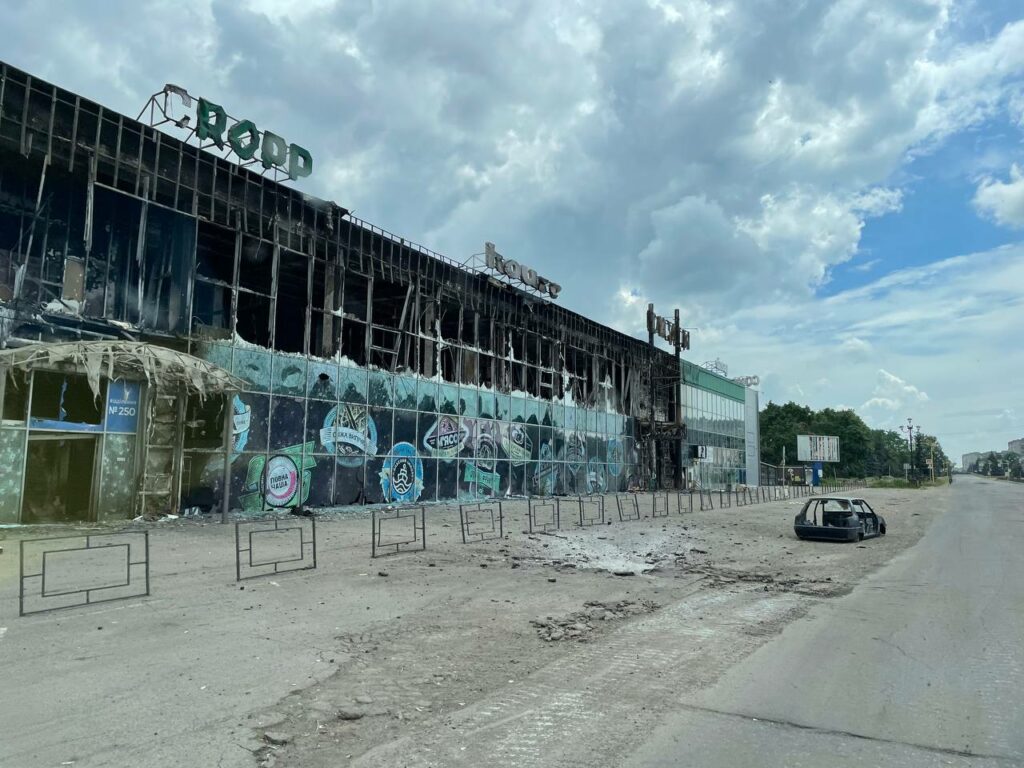
At that time, the volunteers of the NGO Dobro Lysychansk mainly helped the residents of Siversk.
“It is closer to Lysychansk, we knew the area better. We worked in Siversk until October. There were many moments that are hard to forget. We often went to the sites of shelling in Siversk, provided first aid to the wounded and bandaged them. Some of those in critical condition were taken to the nearest military hospital, which was then in Bakhmut. We asked them to accept wounded civilians. Doctors could only stabilize them, and then we took people to hospitals in Kostyantynivka and Kramatorsk. Sometimes people didn’t survive… They died during evacuation… We saw people a step before their death. Of course, we managed to save some of them. Later we saw those people alive and well. It’s a very inspiring feeling,” recalls Roman.
After the occupation
When trips to the Luhansk region became extremely dangerous, volunteers began helping people in the de-occupied territories, in particular, the Kharkiv region. Their activities also covered Sloviansk, Kramatorsk, villages and neighborhoods in the northern areas, and sometimes even closer to Kherson. They worked almost along the entire front line at that time.
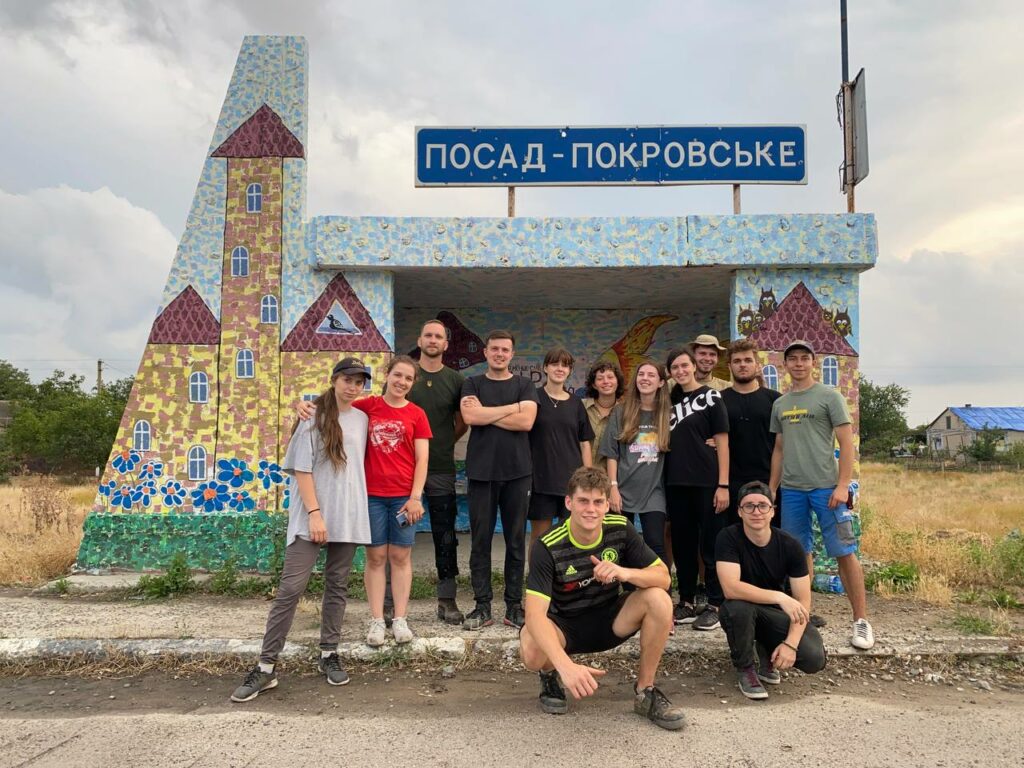
“I remember when in summer, due to the lack of hygienic conditions and medical supplies, one woman began to rot alive. We tried to save her, but we couldn’t. This woman died later… You look at this grief and realize that you can’t do anything about it. You understand that these are the effects of war. We will probably never forget such moments. However, on the other hand, I’m glad that we were able to help many people and save their lives,” the volunteer says.
The team of Dobro Lysychansk, which consisted of about 20 people when the all-out war broke out, made a significant contribution to help people in the front-line communities. However, in October 2022, Roman Kozodoy decided to disband the team and give young people the opportunity to choose their own future path in life. Some of them went to study and others continued volunteering in other regions of the country.
However, seven activists stayed with Roman and continued working with him. In early 2023, Roman and part of the team moved to the Kyiv region. A small group of volunteers continued to help residents of front-line towns and villages. Later, they launched a new project and organized activities for children and young people who still live in the de-occupied territories and near the front line.
Subsequently, the NGO team involved over 70 volunteers.
“In the summer of 2023, we launched a project of volunteer trips with a sports festival. In June and July, we worked in the de-occupied areas of the Kharkiv, Kherson, and Kyiv regions,” Roman Kozodoy says.
«Влітку 2023 року ми запустили проєкт волонтерських поїздок зі спортивним фестивалем. У червні та липні працювали на деокупованих територіях Харківщини, Херсонщини та Київщини», — ділиться Роман Козодой.
Волонтери «Добро Лисичанськ» проводять фестиваль для молоді/ фото Роман Козодой
Волонтери, приїжджаючи до населеного пункту, роздавали гуманітарну допомогу, допомагали прибирати завали після обстрілів та лагодити понівечені будинки. Для молоді влаштовували концерти, змагання та спортивні ігри.
«Багато волонтерів пропонують лише допомогу продуктами. Це теж важливо, але людям треба надавати можливість проживати позитивні емоції. Ми це називаємо «повернути нормальність». До війни люди це мали, а під час війни діти не можуть відчути смак дитинства, бо вони не ходять до школи, не мають можливості спілкуватися з однолітками. Це та потреба, яку, на жаль, покриває невелика кількість волонтерів. Роботи з дітьми, психологічної підтримки завжди не вистачає», — каже волонтер.
У деякі населені пункти команда «Добро Лисичанськ» приїжджала неодноразово. Роман каже, що люди з нетерпінням на них чекають.
«Реакція людей максимально позитивна. Ми не очікували, що на цей проєкт буде такий відгук. Цьогоріч ми набираємо максимальних обертів, плануємо здійснити більше таких поїздок. Адміністрації міст та містечок радо йдуть на співпрацю, шукають укриття та можливості, щоб ми провели розважальні заходи. Нас кличуть з повторними візитами. Діти та їх батьки дуже зацікавлені. Ми підтримуємо з ними зв’язок», — розповідає Роман.
Покривають фінансові розходи волонтери власними силами, також періодично долучаються благодійники та міжнародні партнери.
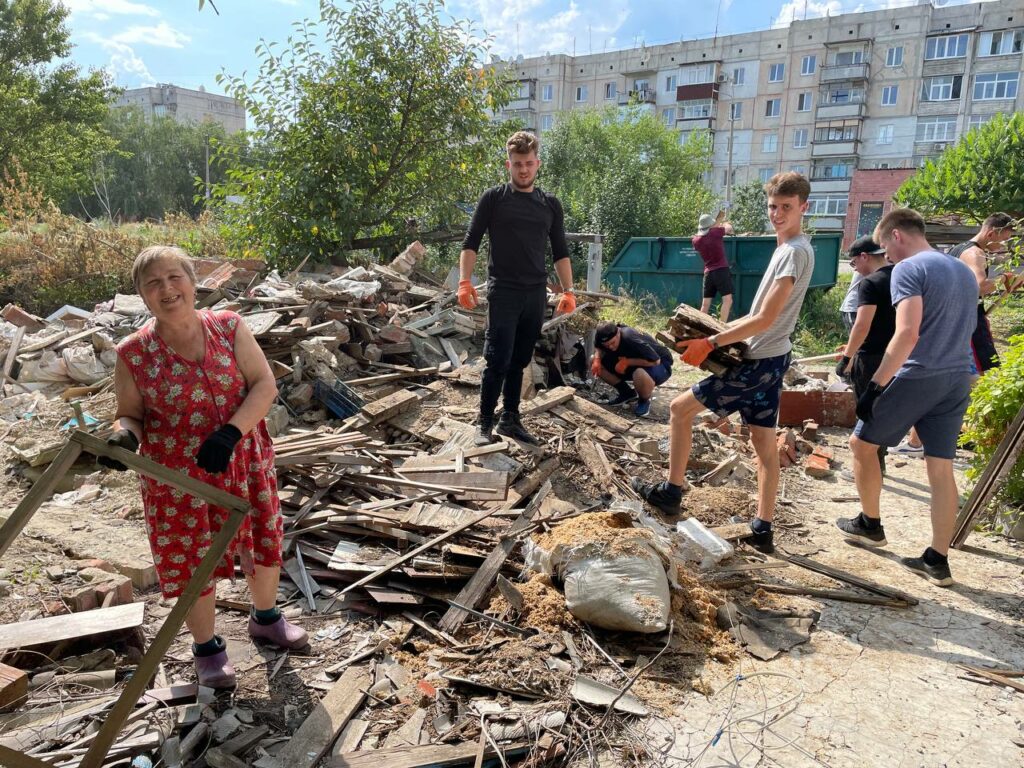
Станом на 2024 рік команда ГО «Добро Лисичанськ» вже запланувала чотири благодійні поїздки з фестивалями у Балаклію, Ізюм, Нове Залісся, Чорнобаївку.
«Окрім всього іншого ми ще ведемо проєкт «Є Житло», це суто наш проєкт, він не пов’язаний з державною програмою. Ми допомагаємо з відбудовою житла військовим та цивільним. Наразі працюємо над тим, щоб допомогти побудувати будинок жінці, яка втратила свого чоловіка на війні. Власний будинок — була мрія родини, яка має здійснитися для жінки полеглого героя та їх дітей», — каже Роман.
Author: Oleksandra Zoz.
*All photos are provided by the author
Carried out as part of the project supported by the U.S. Embassy in Ukraine. The views of the authors do not necessarily coincide with the official position of the U.S. government.

